We went to our doctors’ appointments – and my very critical hair appointment – saw a few friends and family members in Minnesota then flew back to Paris. Our goal for this trip was to visit Disneyland Paris and parts of southern France.
We landed at 6:00 a.m. Our hotel wasn’t available until 2:00 p.m. We had given ourselves a “day of rest” so we had nothing pressing. We found a lovely little cafe at the end of the block near our hotel. We first sipped cups of coffee at a snail’s pace, then ordered something for lunch. We absolutely adored the cafe! The coffee was wonderful and we were happy to relax in a lovely setting while we worked very hard to stay awake before going back to the hotel.
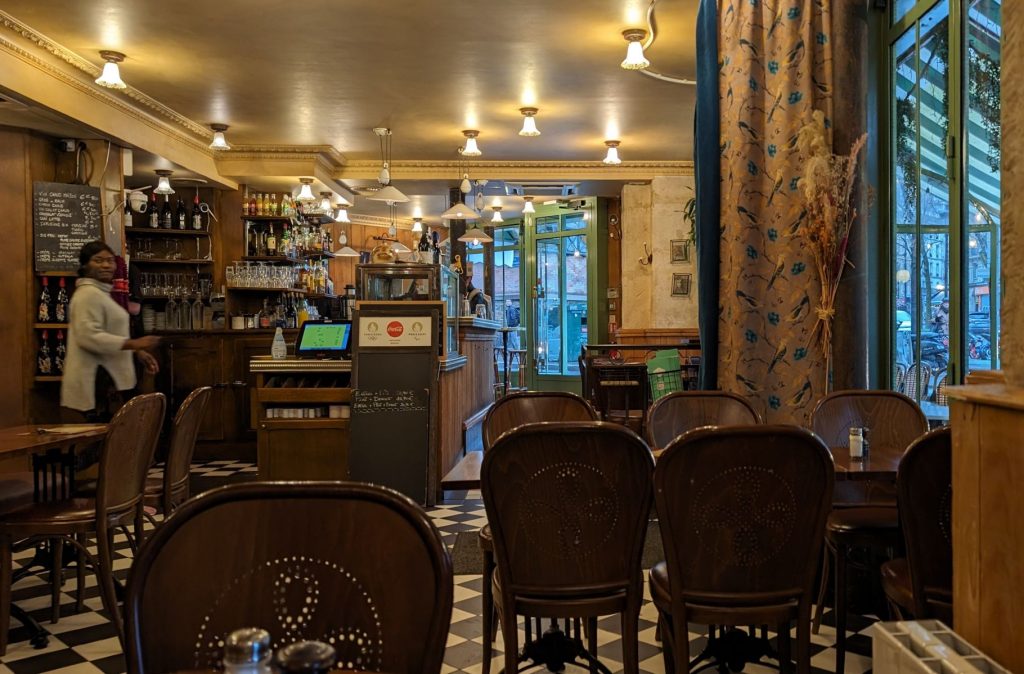
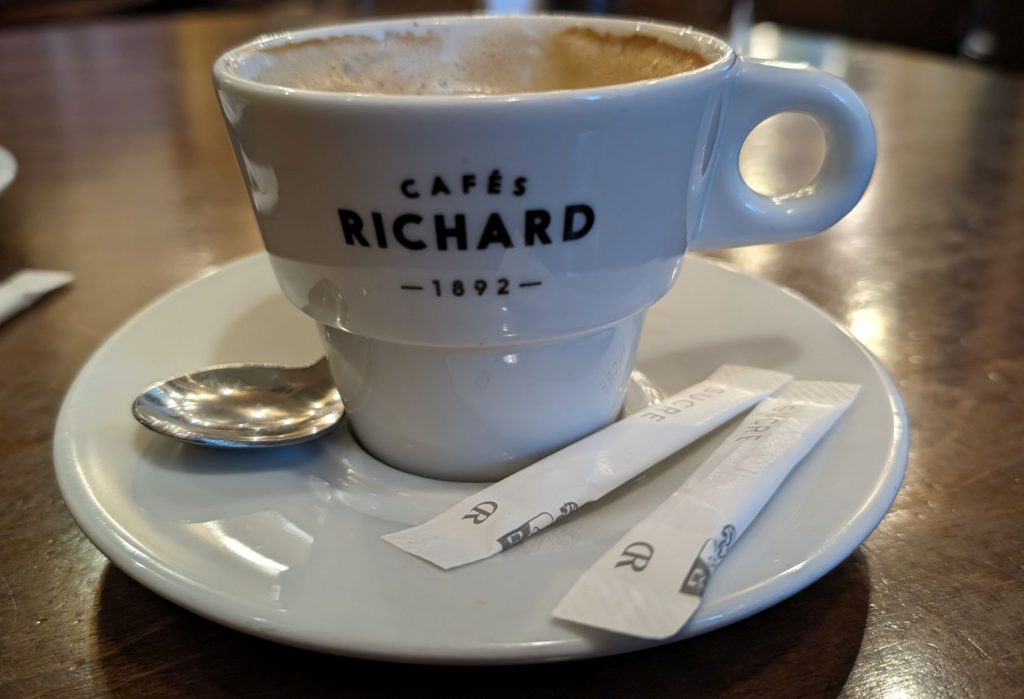
We arrived a second time at the hotel between noon and 1:00 p.m. We headed to their small eating area that included some sofas. I sank down on one sofa and listened to Michael chat with guests. Before I knew it, it was time to check in. Michael informed me that I had been snoring and capturing the attention of other guests. Oops!
We took a nap (a second one for me, apparently) and went to the same cafe for dinner. At that point, we were all about location.
Our second day was devoted to Disneyland Paris.
Those who know me know that I love Disney Parks! My favorite is (still) Walt Disney World in Florida because it has so many great rides and themes (think Star Wars, for example). In any event, it was inevitable that we would go to Disneyland Paris.
I thought it would be fun to spend the night in a Disney Hotel but discarded that idea when I saw the price. I did want to go to both parks (Disneyland and Walt Disney Studios), so that was not even up for debate. I figured out how we would get to Disneyland from Paris (super easy!) and bought tickets (back in January) for February 23. I crossed my fingers that the weather would be nice that day.
It wasn’t. It was a bit chilly, it rained/poured off and on, and hailed. But it was nice when you were in the sun! And of course we still had fun!!
We went to Disneyland Park first. The only ride we wanted to go on but didn’t was Space Mountain. It was having technical difficulties when we were near it. It opened sometime later, but by the time we realized it, we’d had a full day and were already heading to the train.
We were able to ride plenty of rides because most of the lines were short. My three favorite rides were Crush’s Coaster: Thrill-Seeking in the Deep Blue Sea, Avengers Assemble: Flight Force, and Spider-Man W.E.B. Adventure. The first two are roller coasters. The last one is a ride where you fling your arms (bend them at the elbows then quickly and energetically thrust your hands out, just like Spiderman would!) to throw webs and take out the bots. Three of the best rides EVER!! Here are some pictures from our visit.
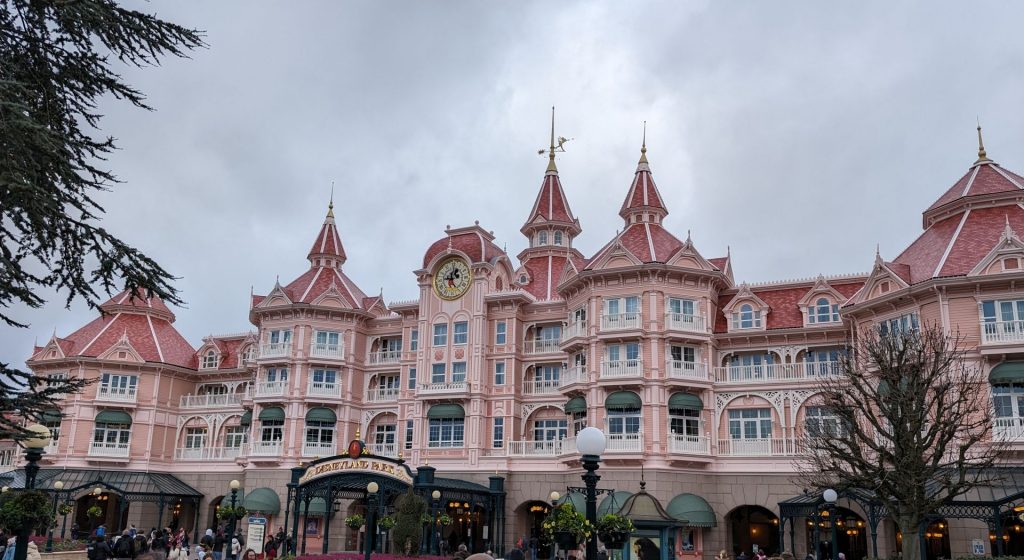
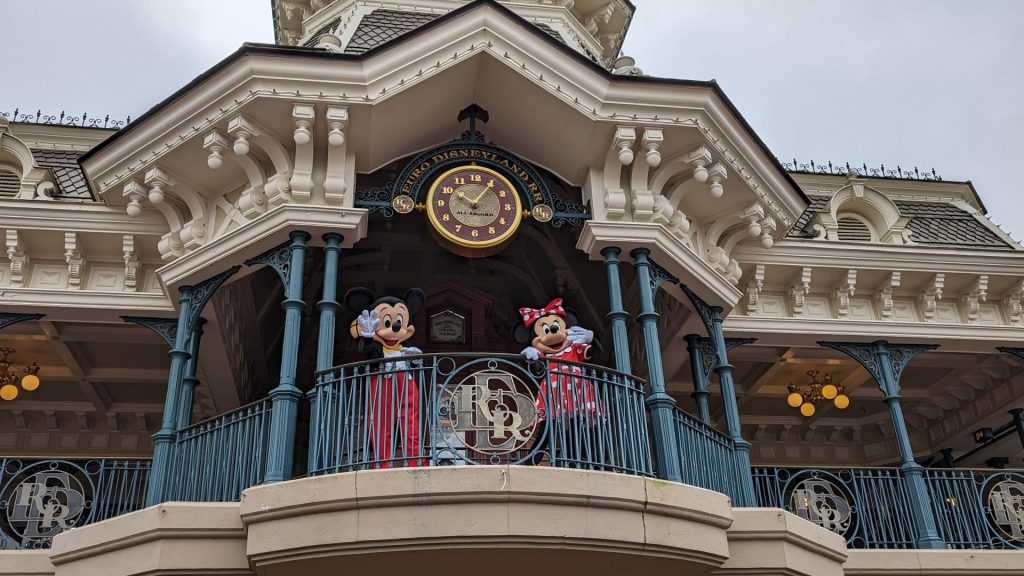
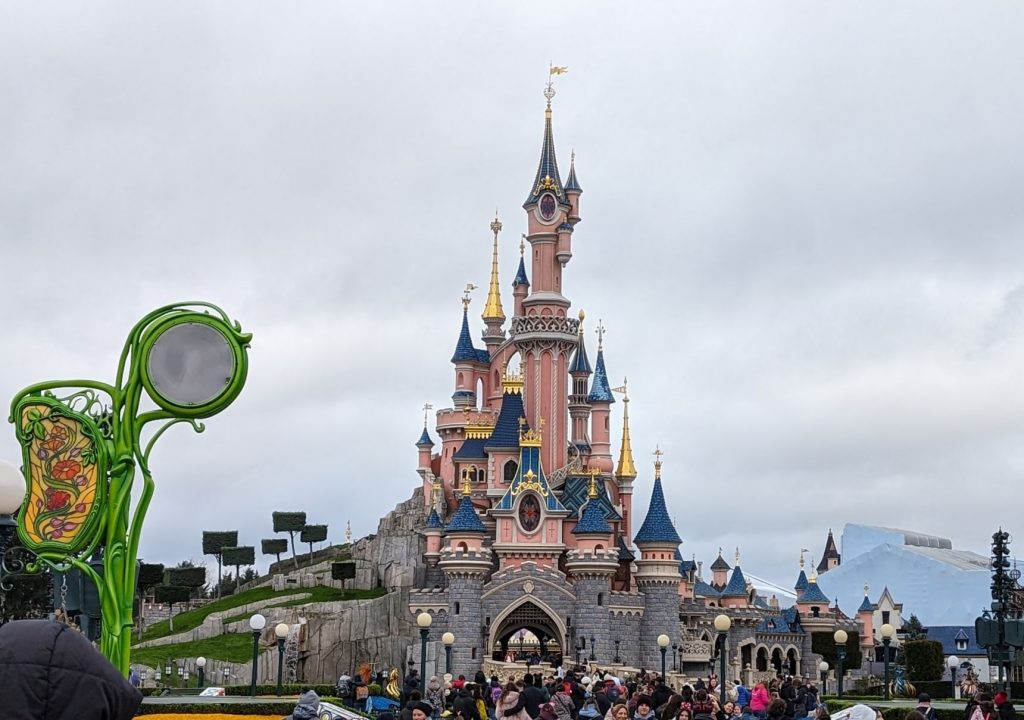
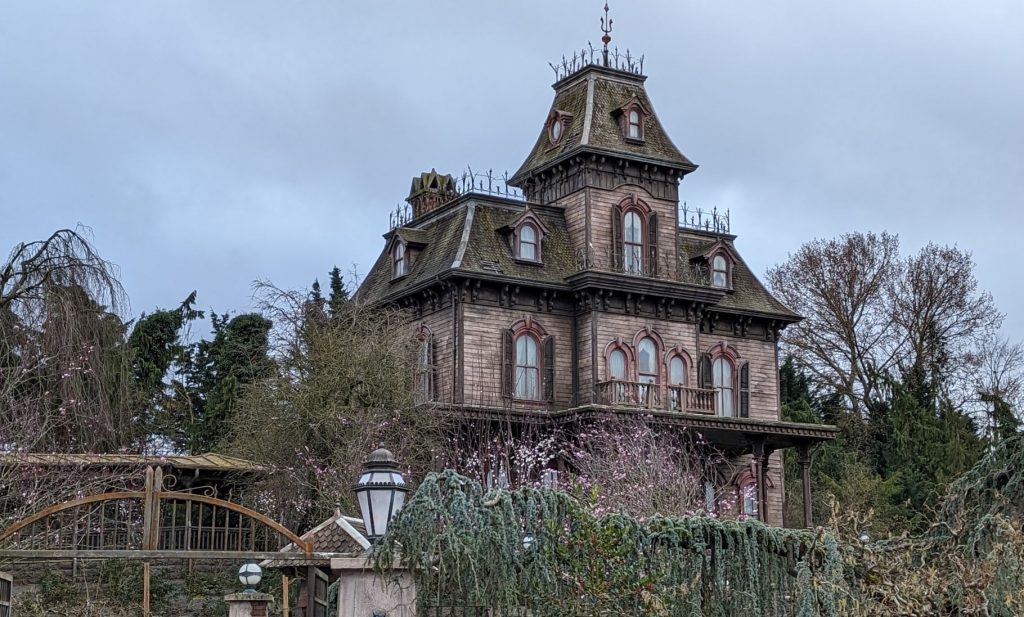
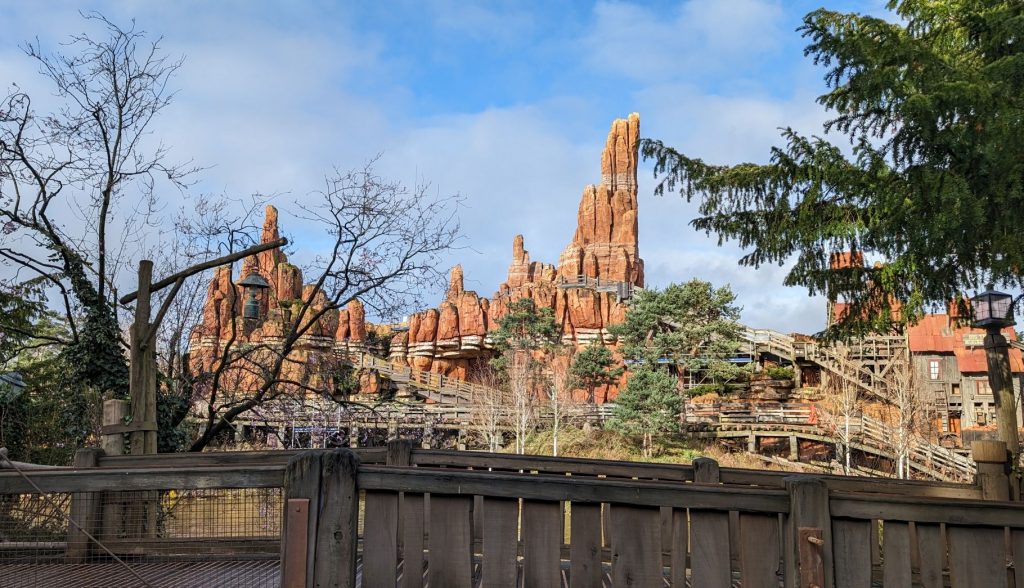
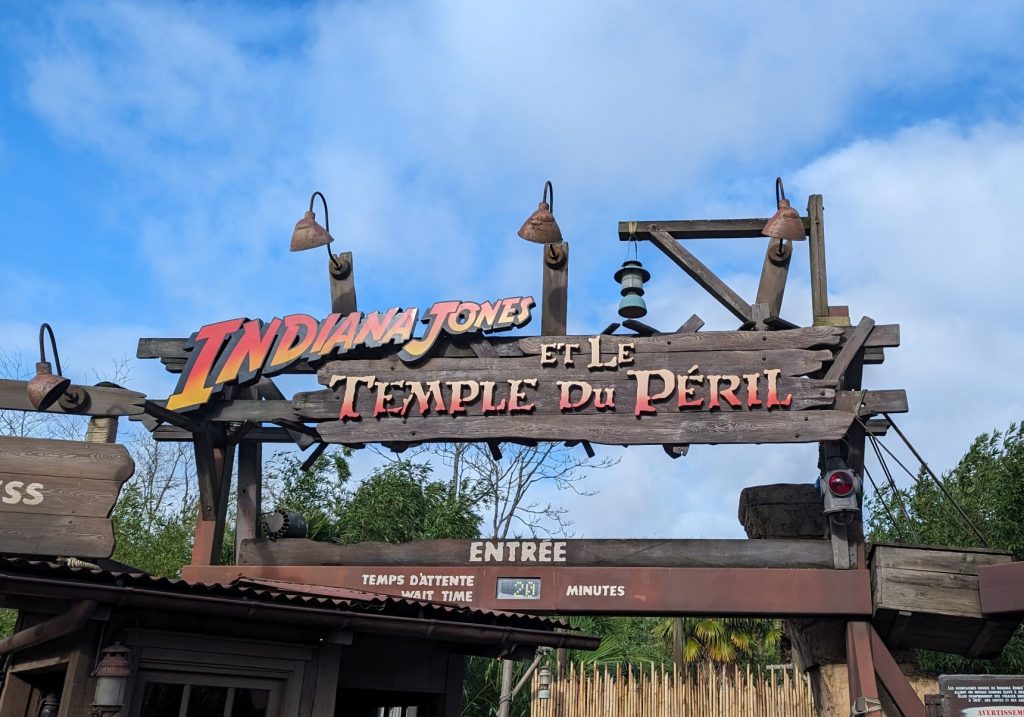
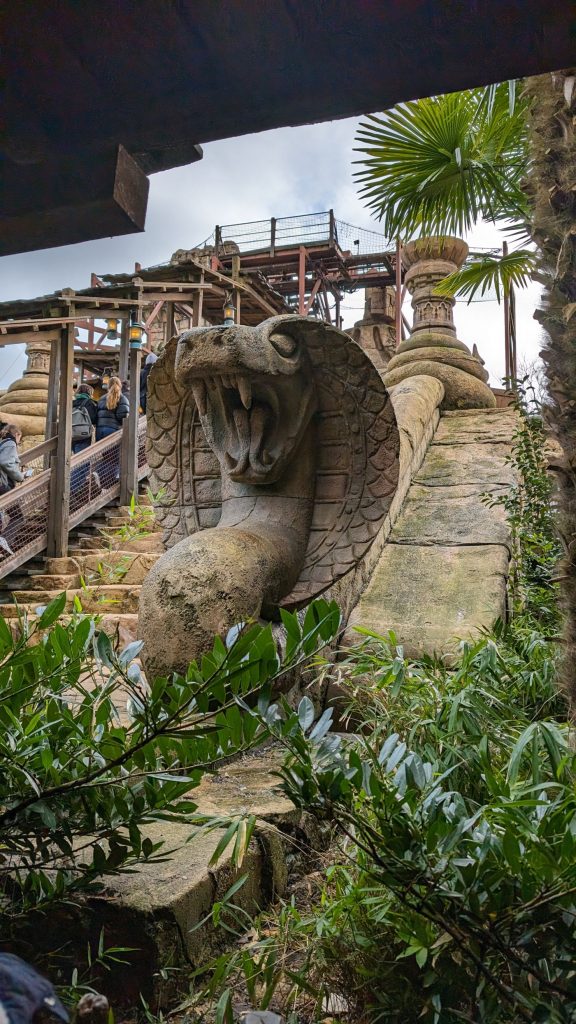
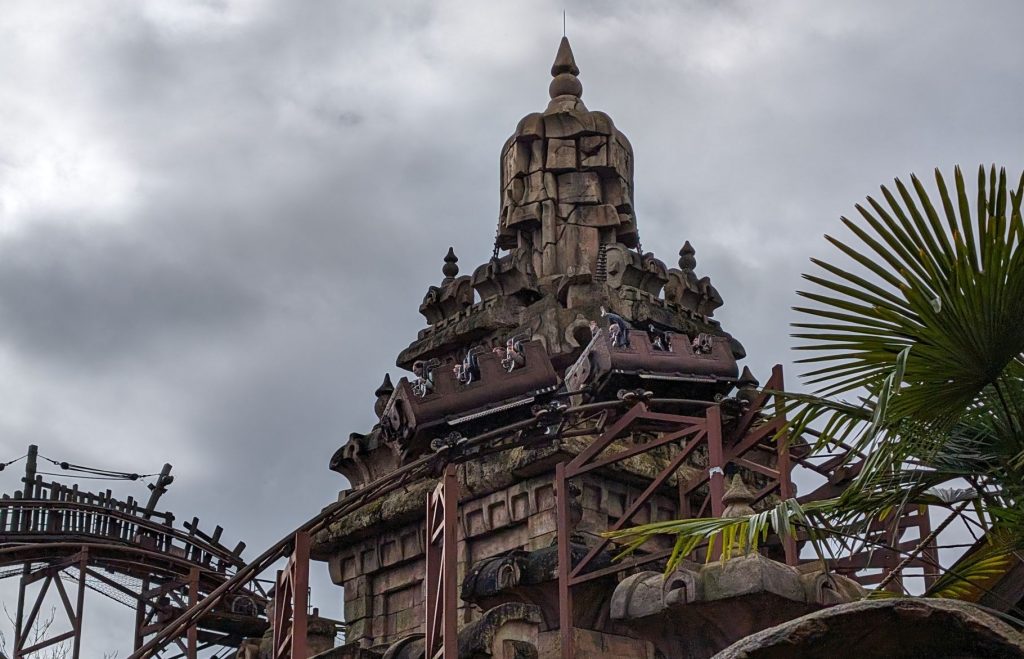
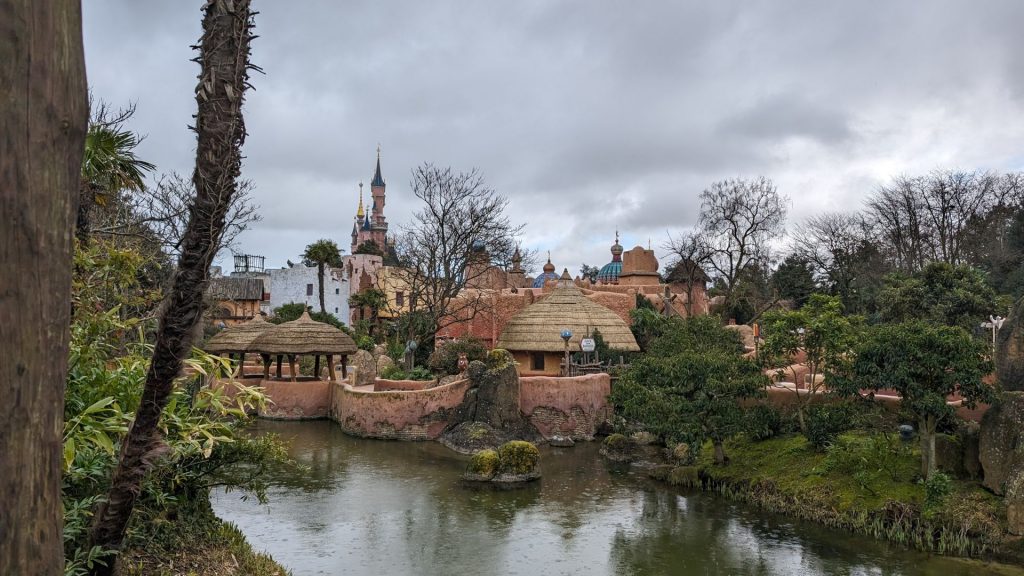
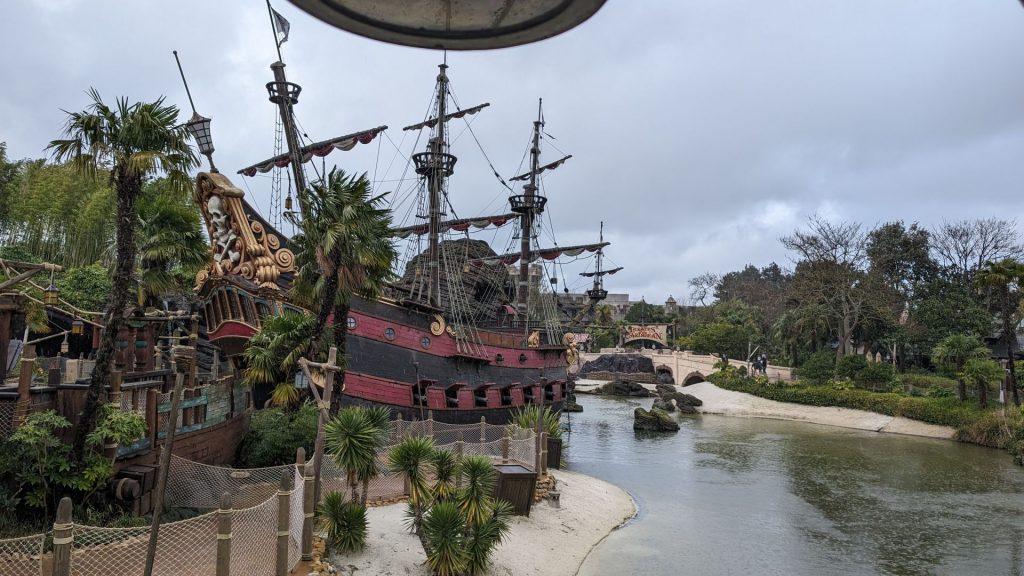
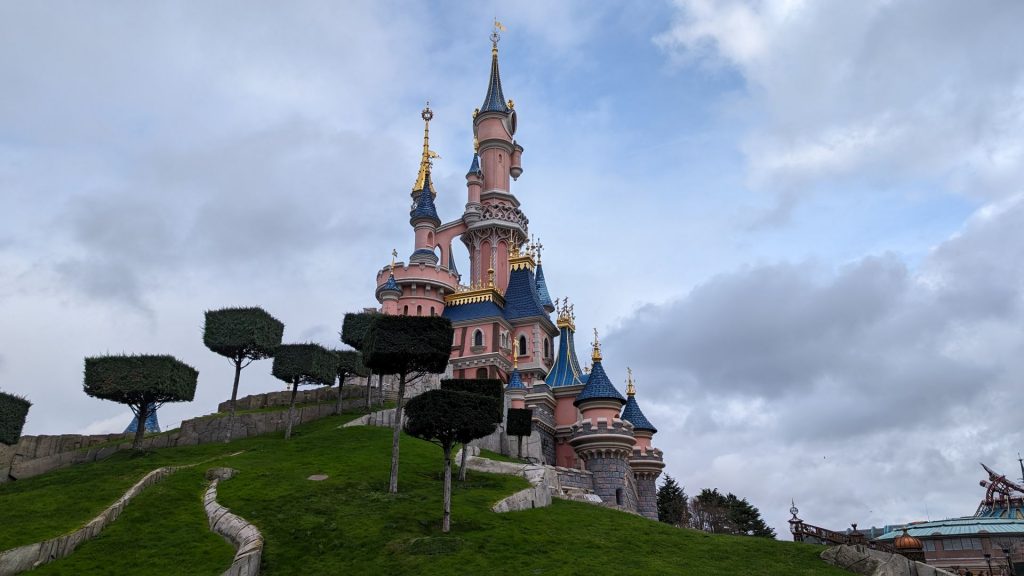
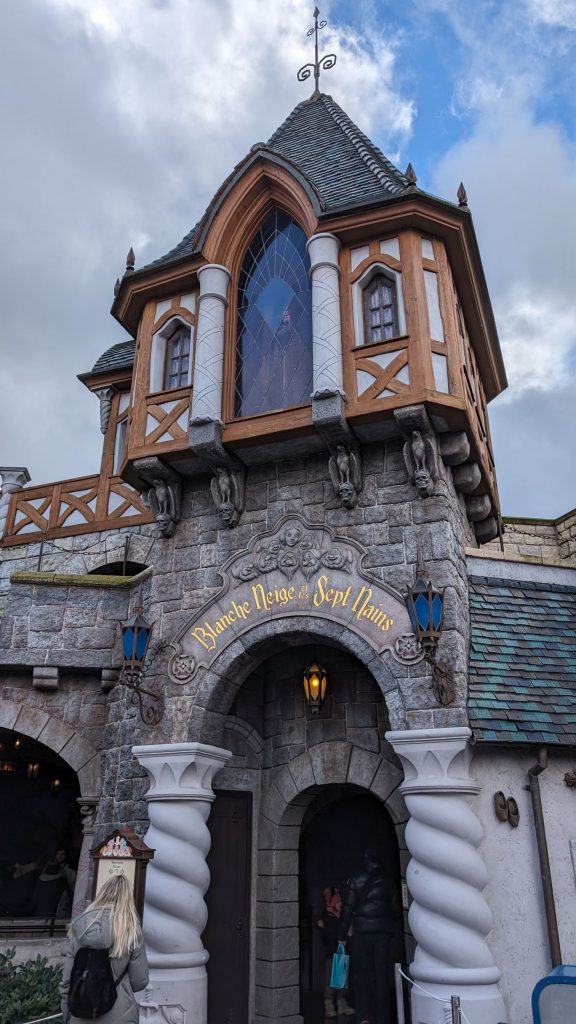
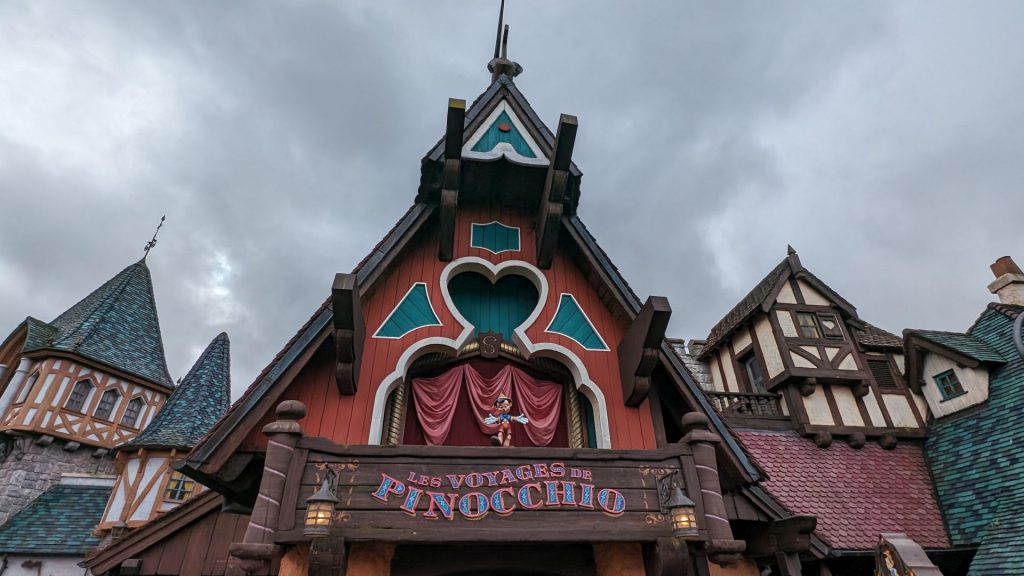
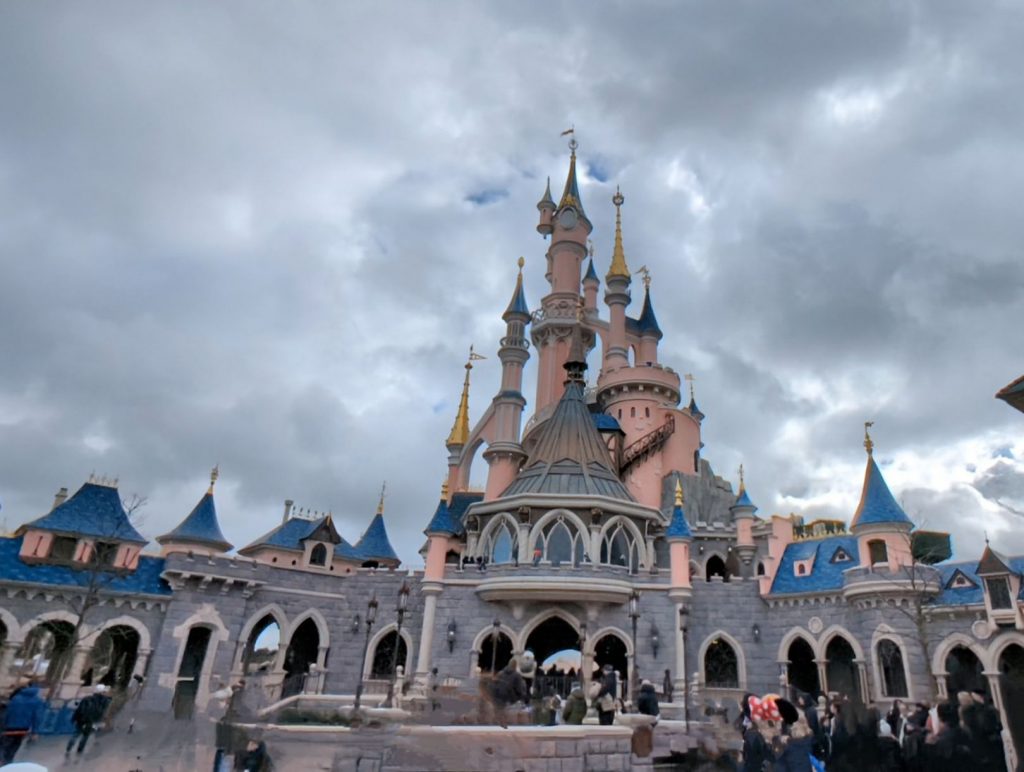
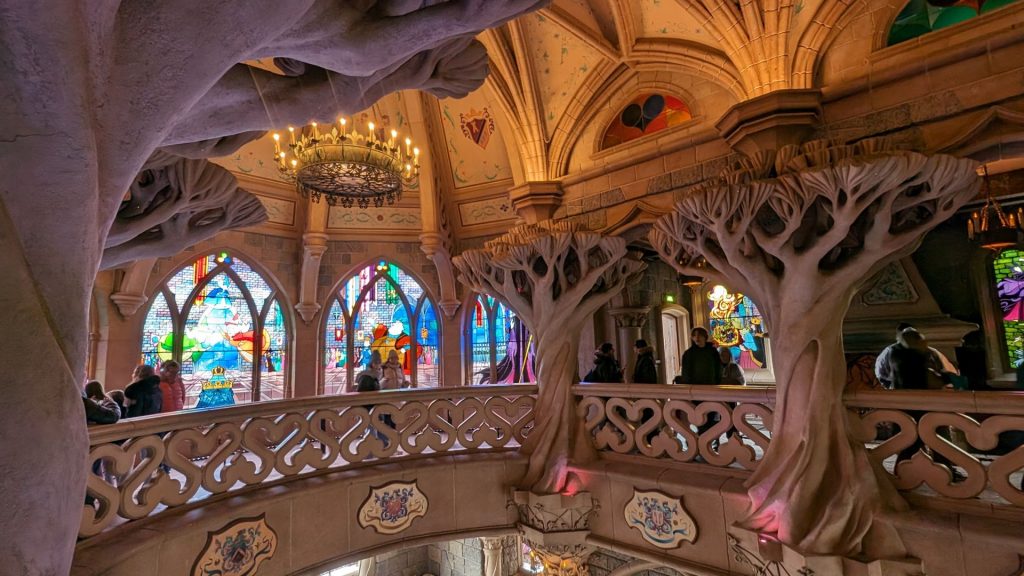
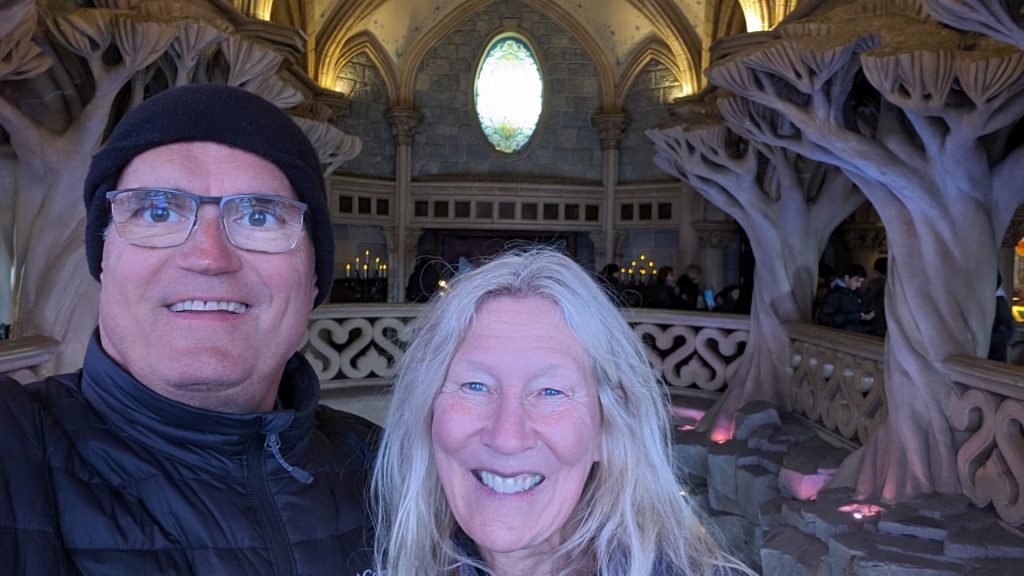
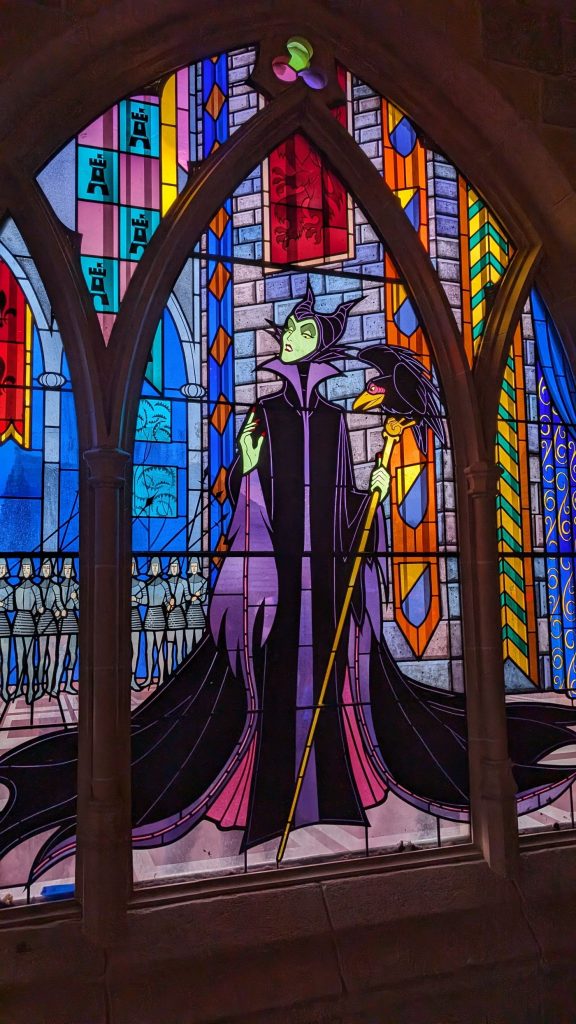
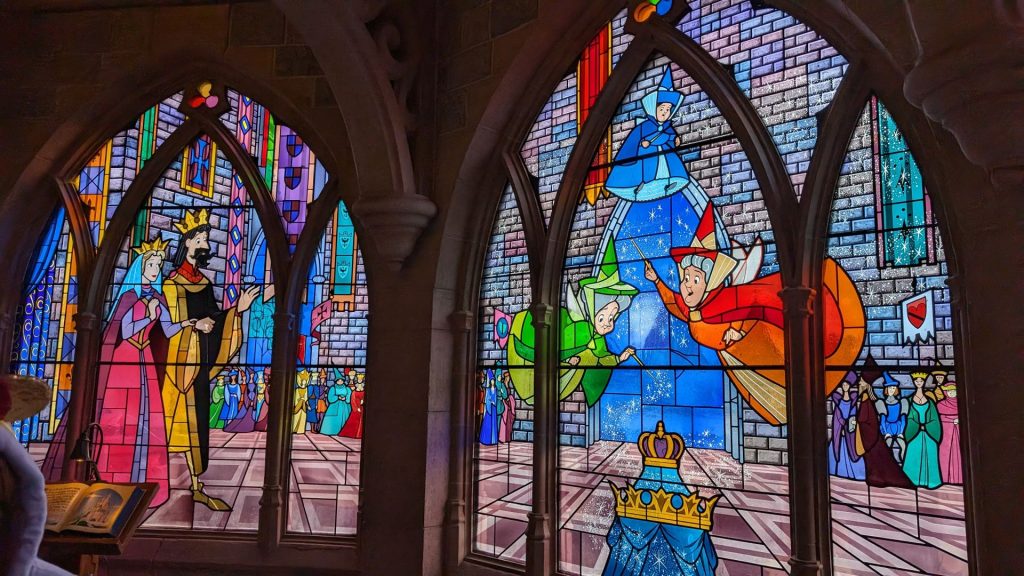
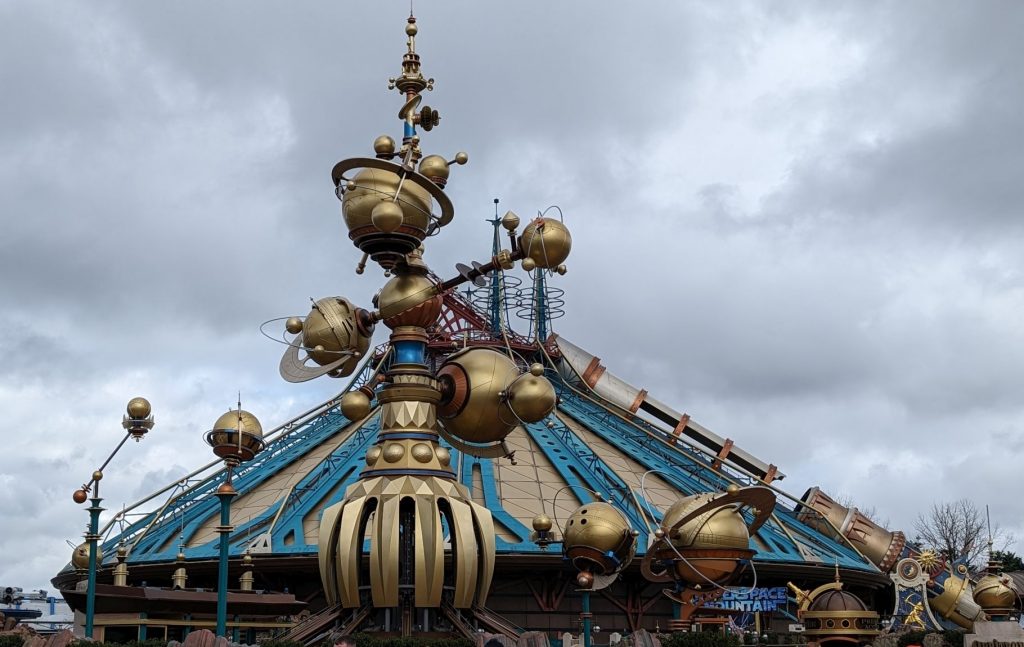
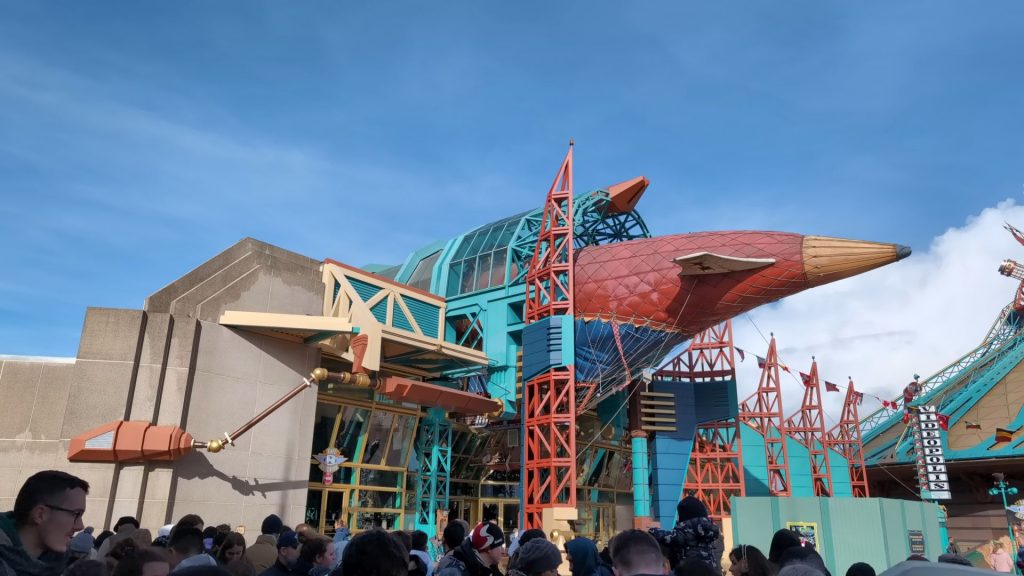
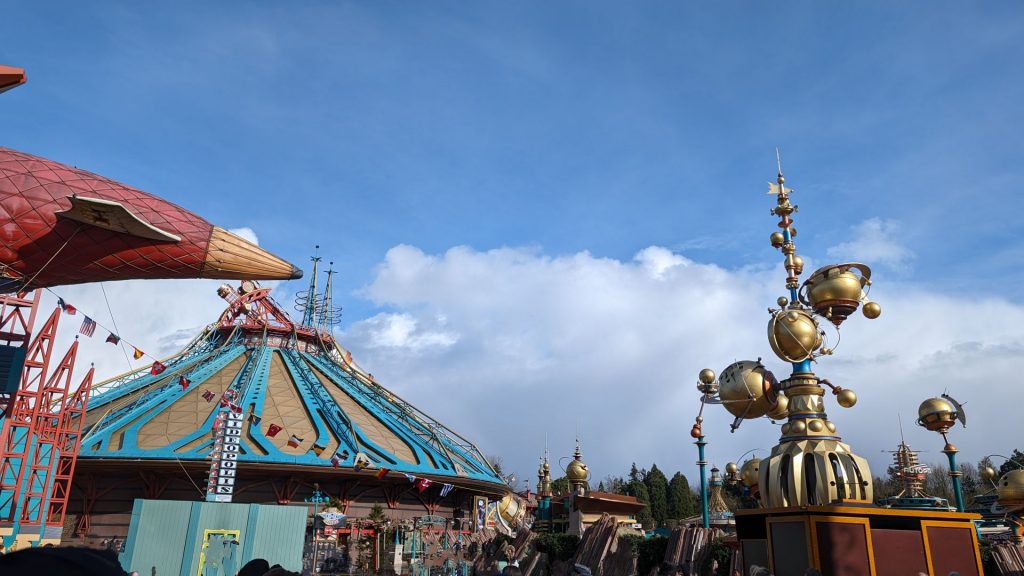
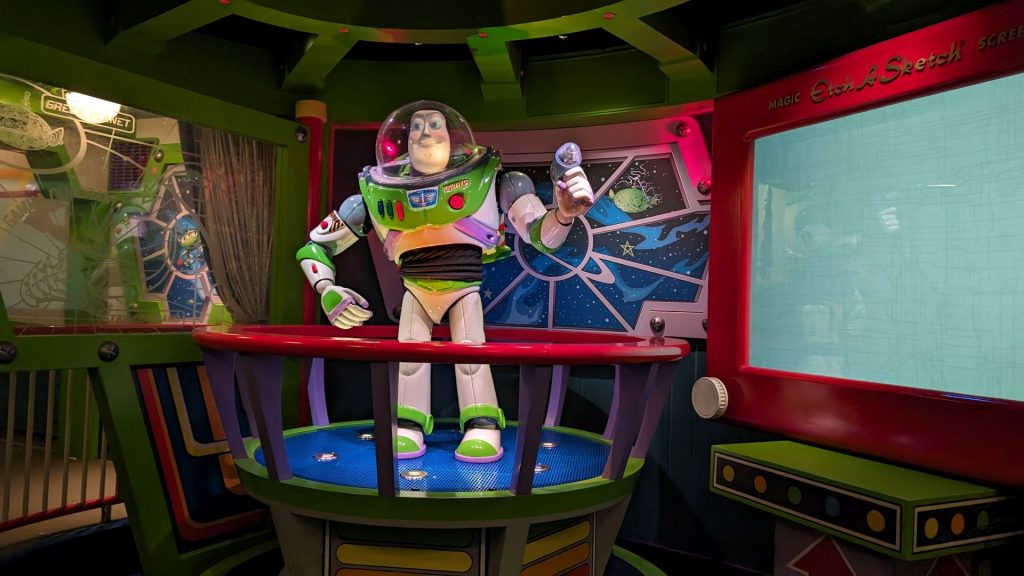
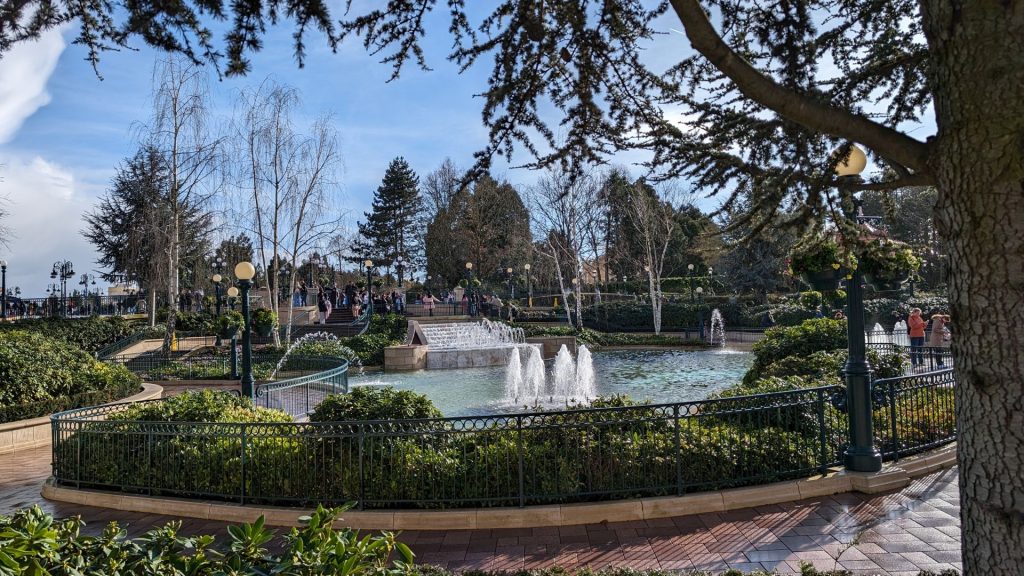
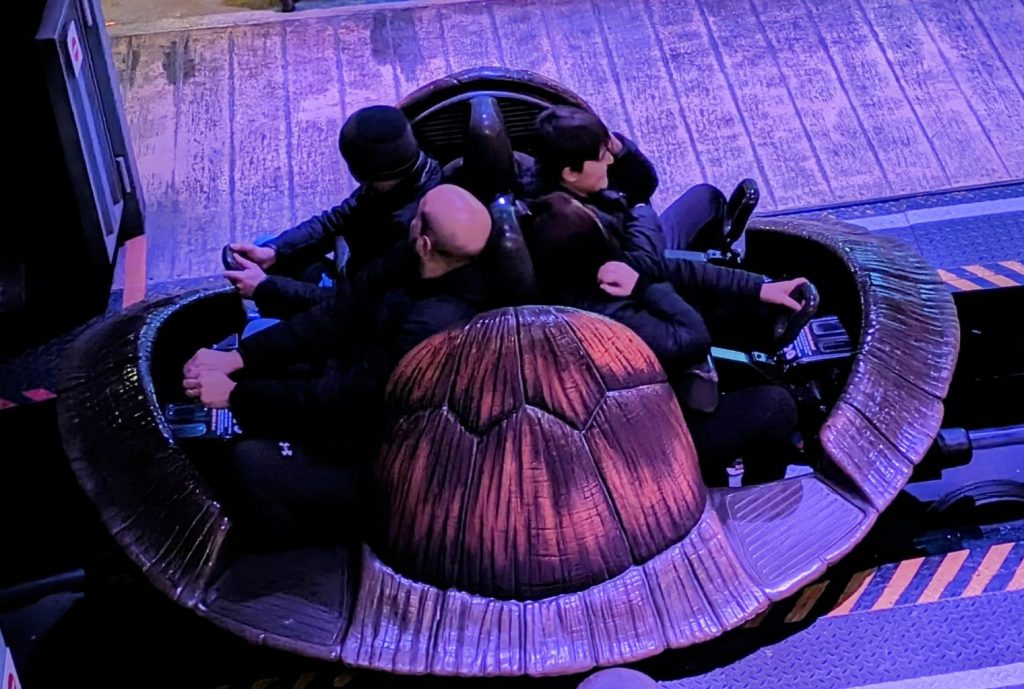
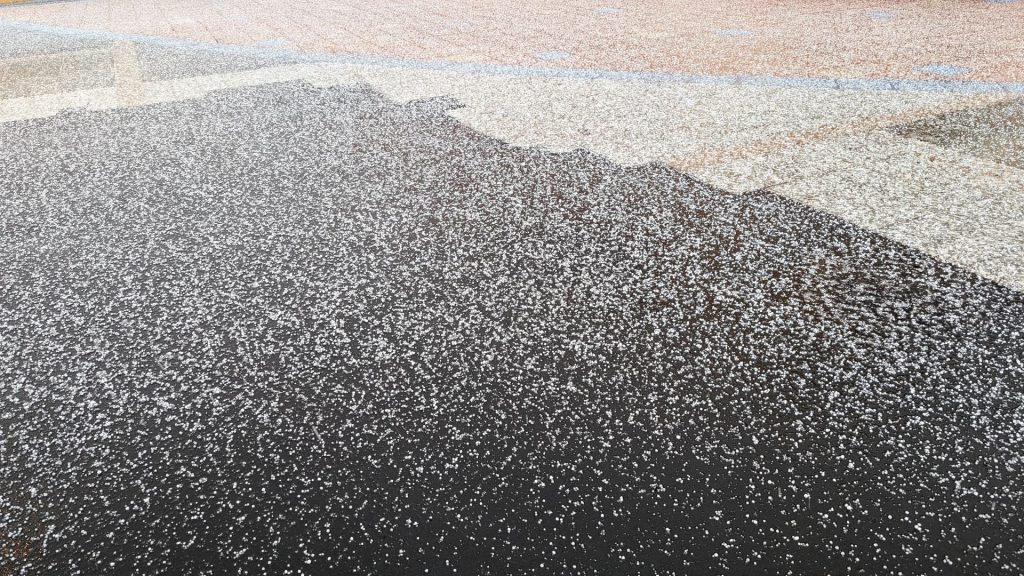
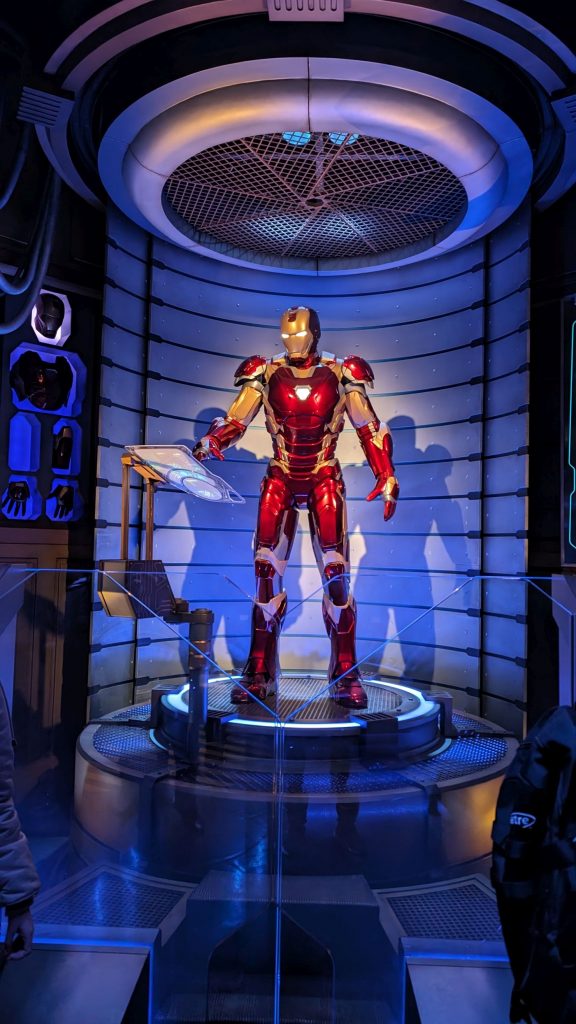
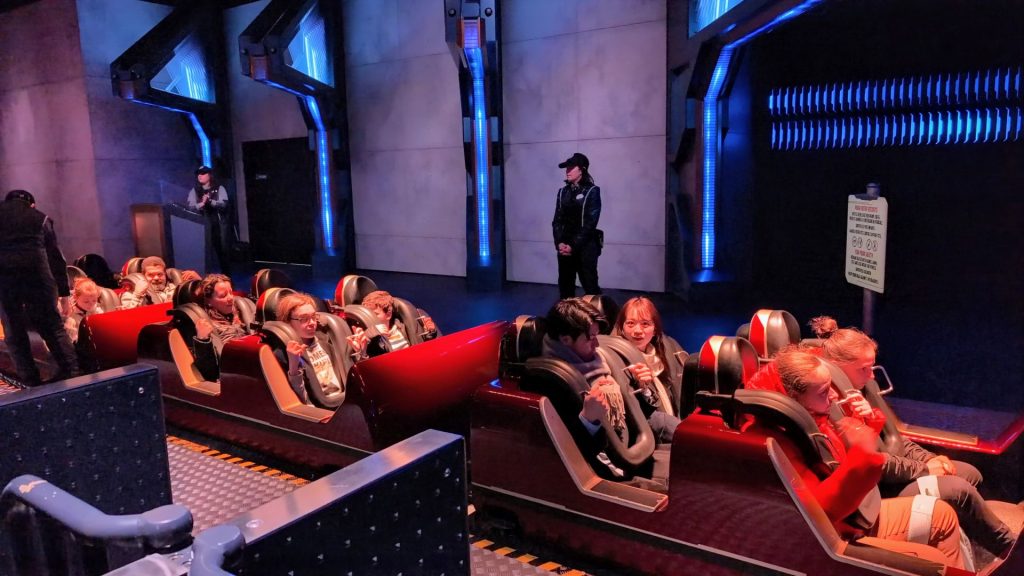
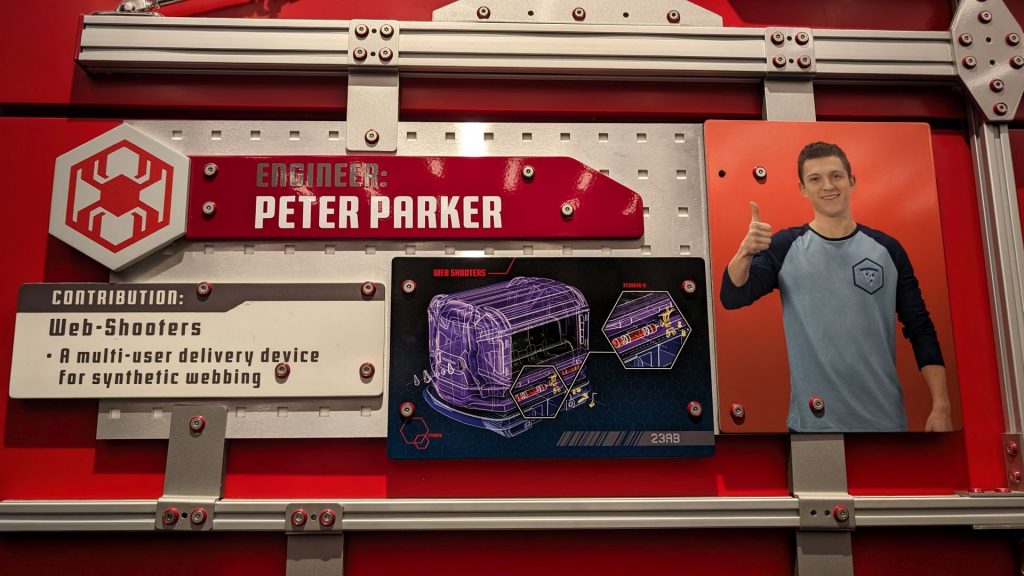
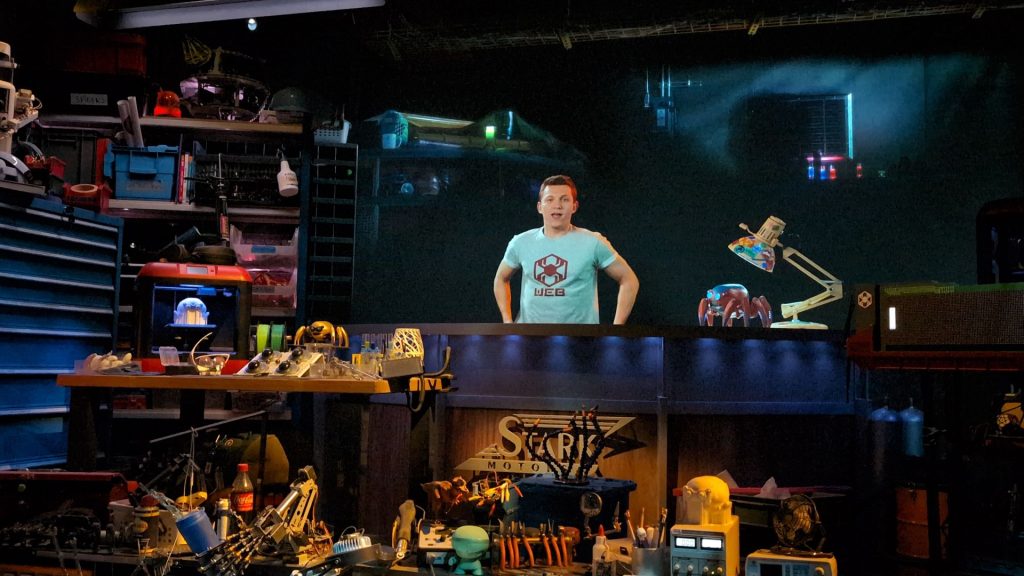
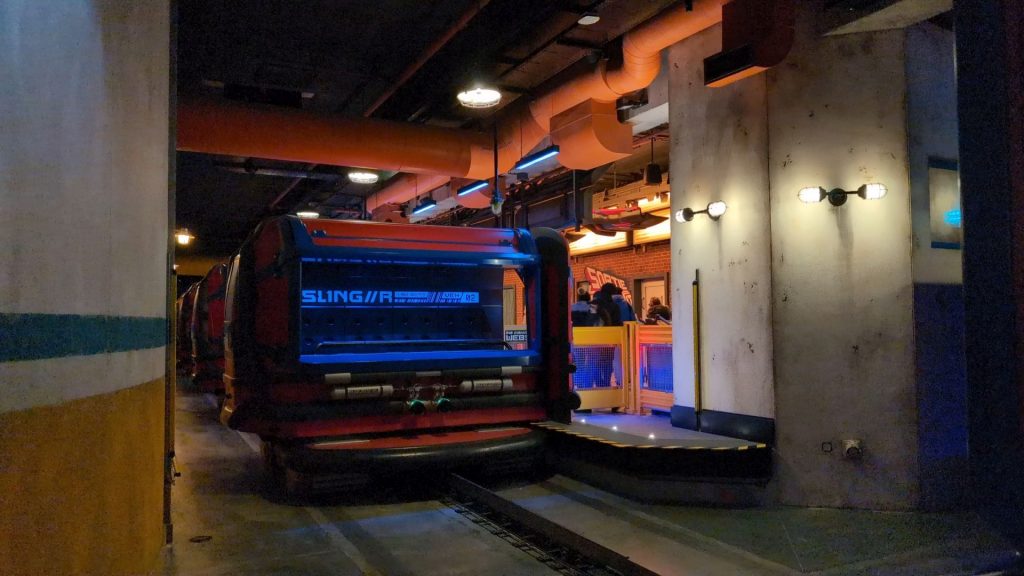
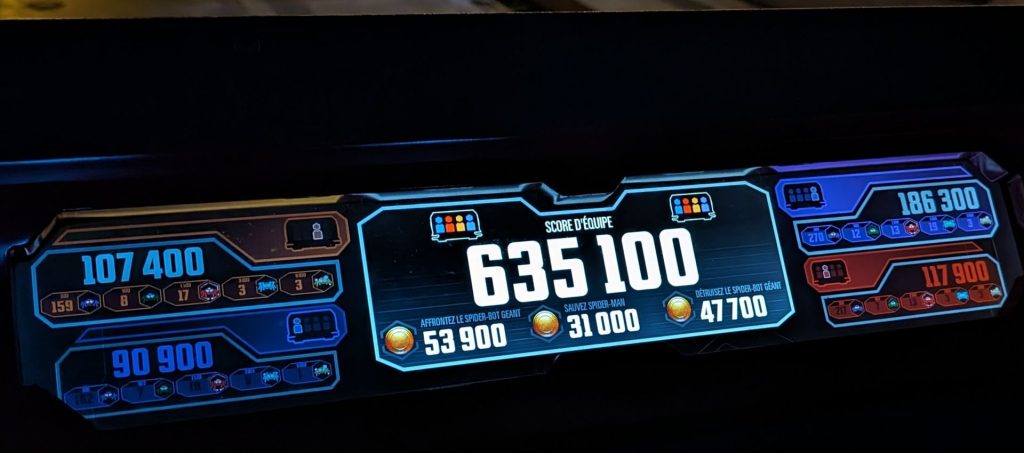
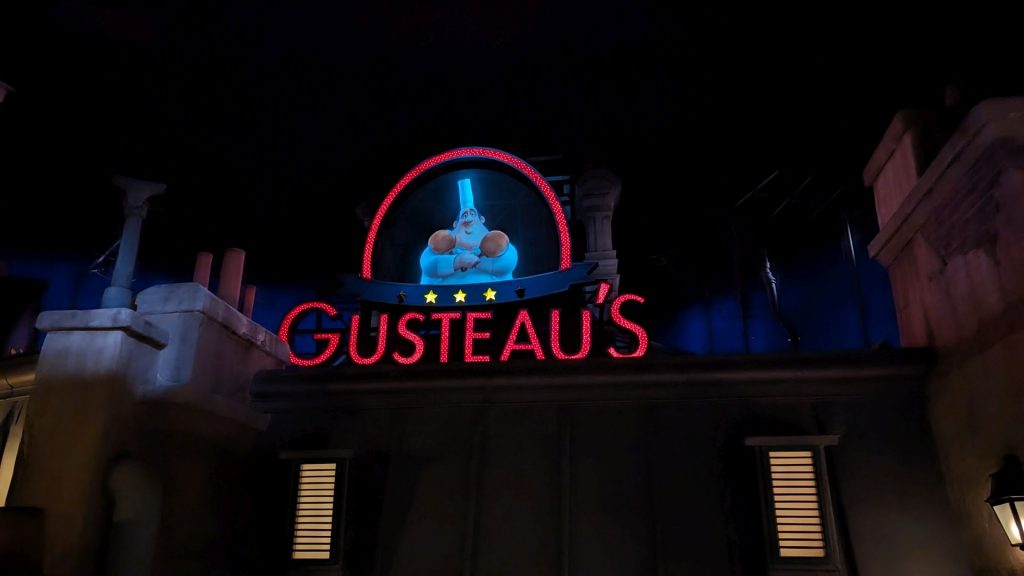
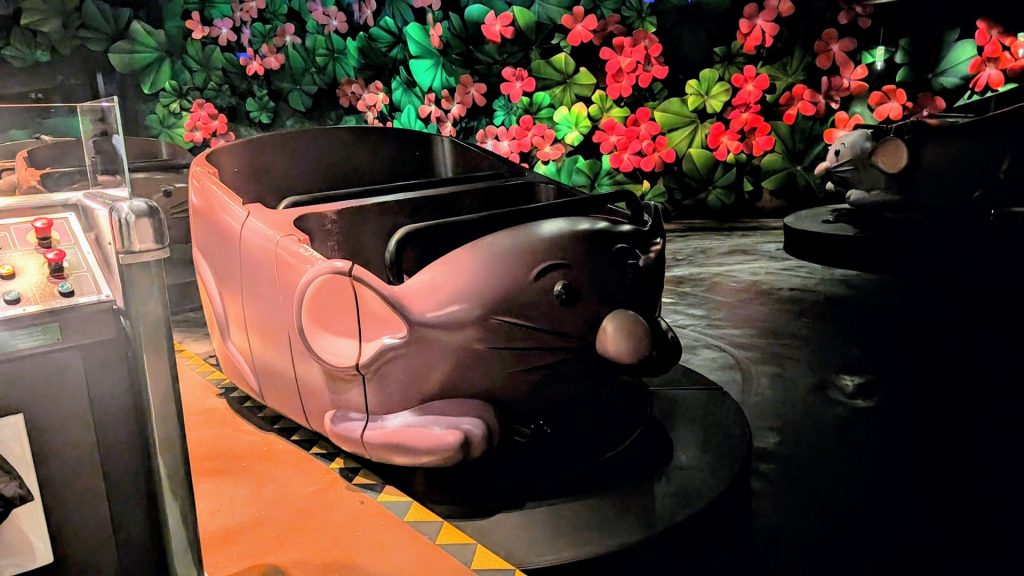
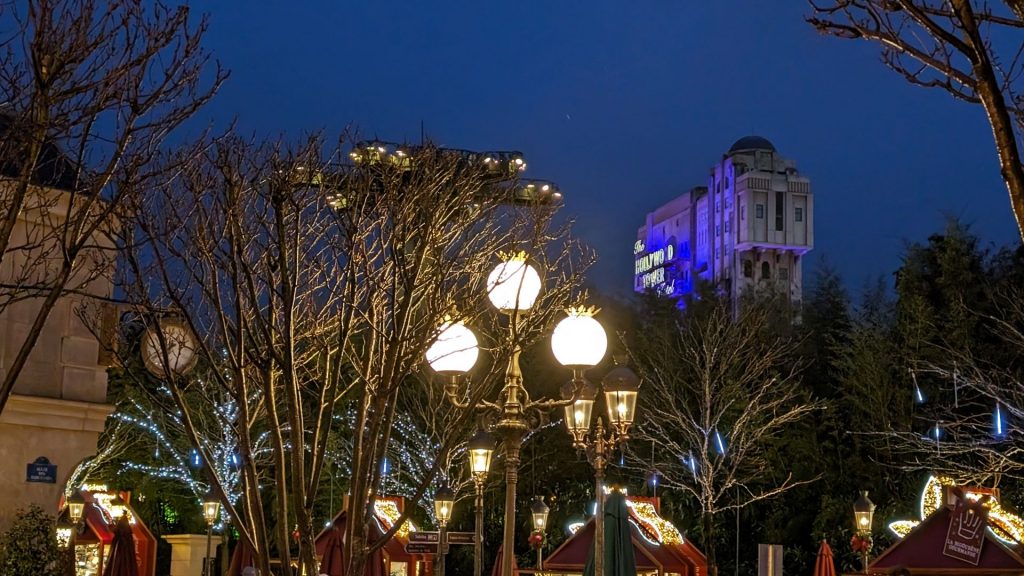
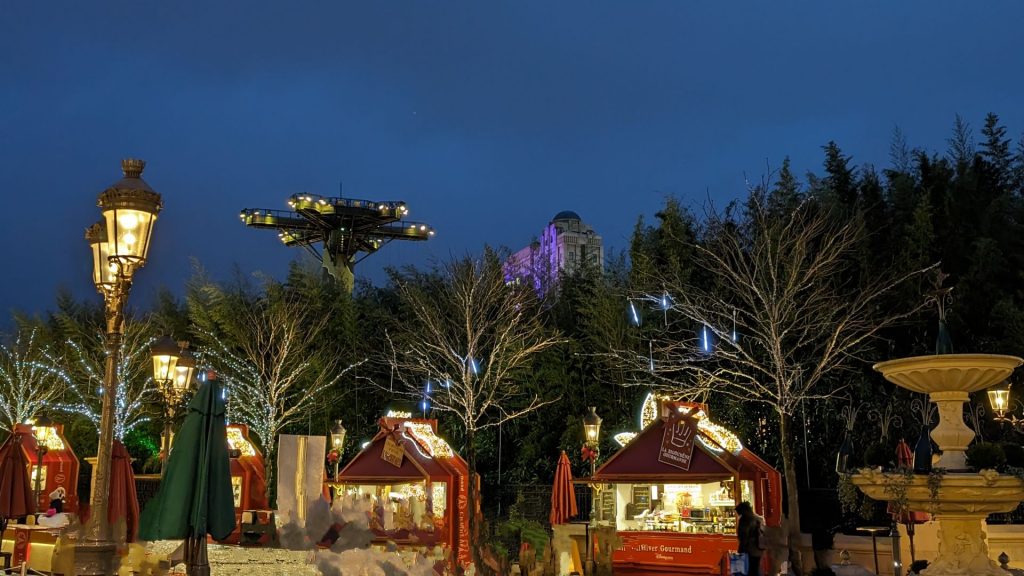
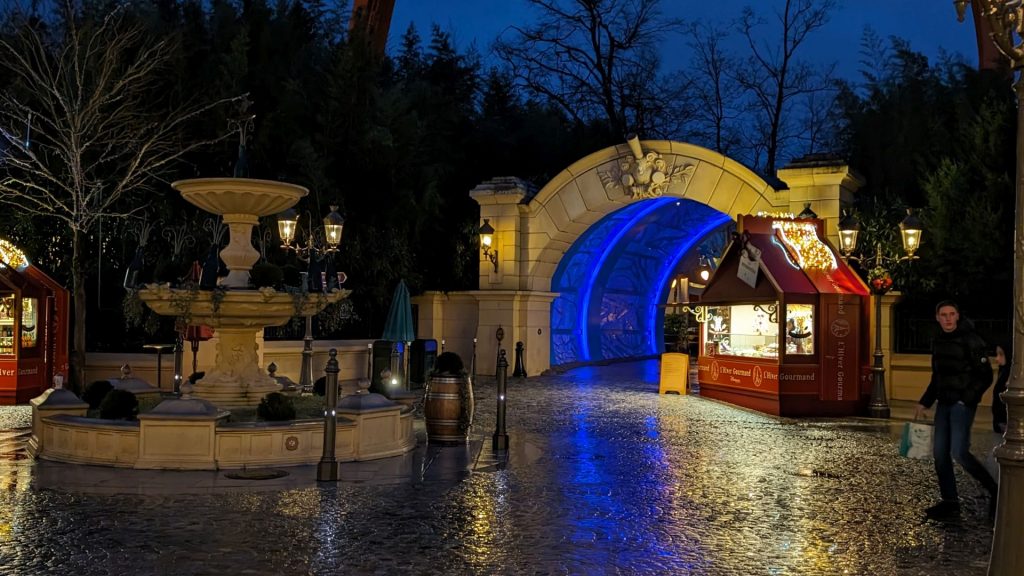
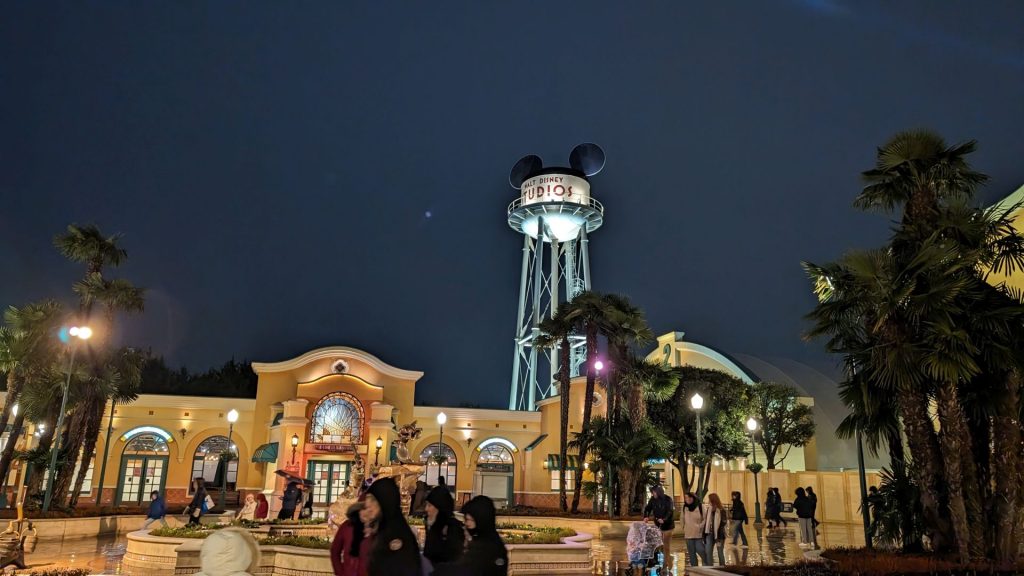
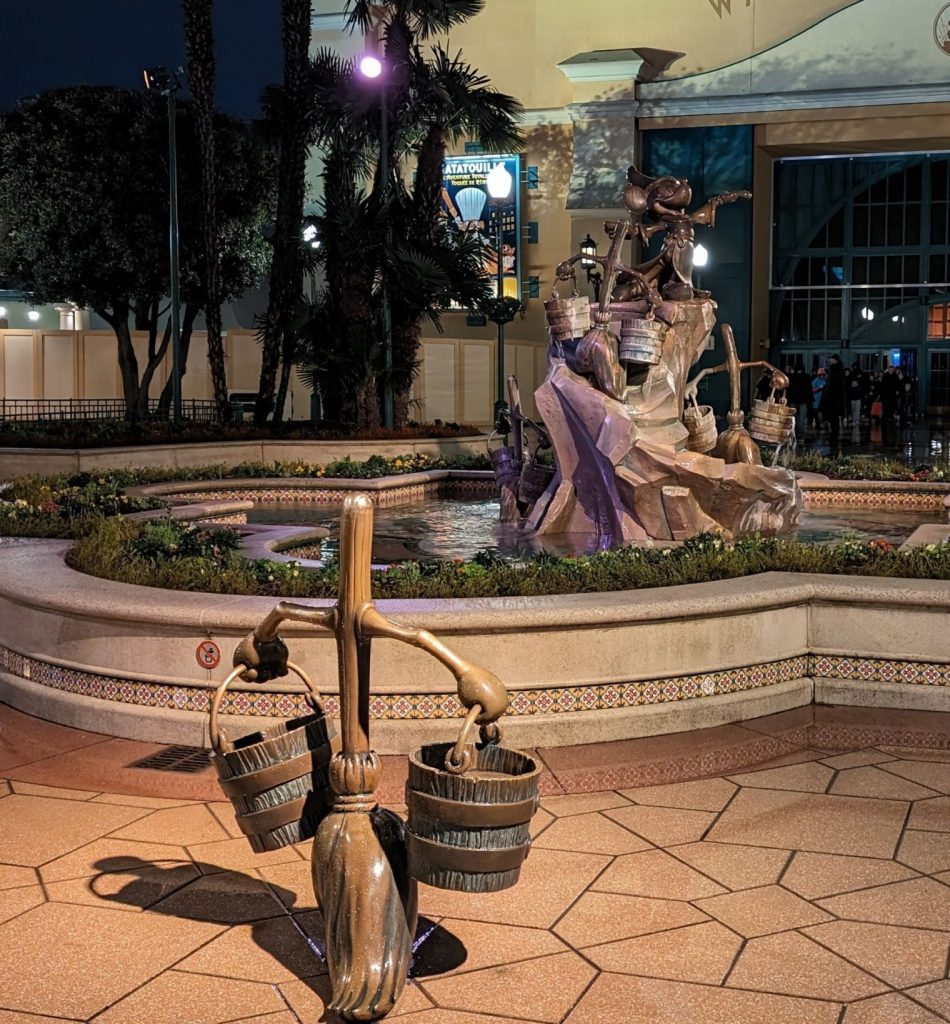
If the weather had been nicer, we would have stayed longer. But by the time we’d ridden our “must” rides we were a bit chilly and hungry. We had been underwhelmed with the food we’d had for lunch and the dinner options seemed to be the same, so we decided to head for the train and eat near the hotel.
We ended up eating YET AGAIN at the cafe by our hotel. This is only because we didn’t find anywhere else between the station and our hotel (a very short distance) and we weren’t in the mood to walk a long distance.
By this time, the waitress almost knew our shoe sizes and favorite colors. . . . 😉
We left the hotel at a decent time the next day to catch the metro then high-speed train to Toulouse. We visited three churches and a pub.
You might have noticed that we often visit churches/basilicas/cathedrals. (BTW, if you are wondering – as I was – why there are three names for these structures, this is what I found: A church is a general term for a building used for Christian worship. A basilica is a church that has been given special privileges by the Pope. A cathedral is the main church of a diocese and is the home church for the bishop or archbishop. There you are.) Back to our story. For one thing, they are often the main tourist attraction. For another, they are typically quite beautiful. (Although I am sometimes appalled at the amount of gold and riches within them: it seems that quite a bit of that money could have been spent on the poor or food or something.) I enjoy the stained glass windows, architecture and history of each one. I sometimes get the feeling of being in a sacred place. That is something that is quite individual and means different things to different people. But I know it when I feel it. [I should note that Michael can take or leave churches by this time. 🙂 I sometimes go in while he hangs out somewhere.]
We visited Saint-Etienne (a.k.a. Toulouse Cathedral) first. Saint-Etienne is a Roman Catholic church, national monument, and is the seat of the Archbishop of Toulouse. It has been listed since 1862 as a monument historique by the French Ministry of Culture.
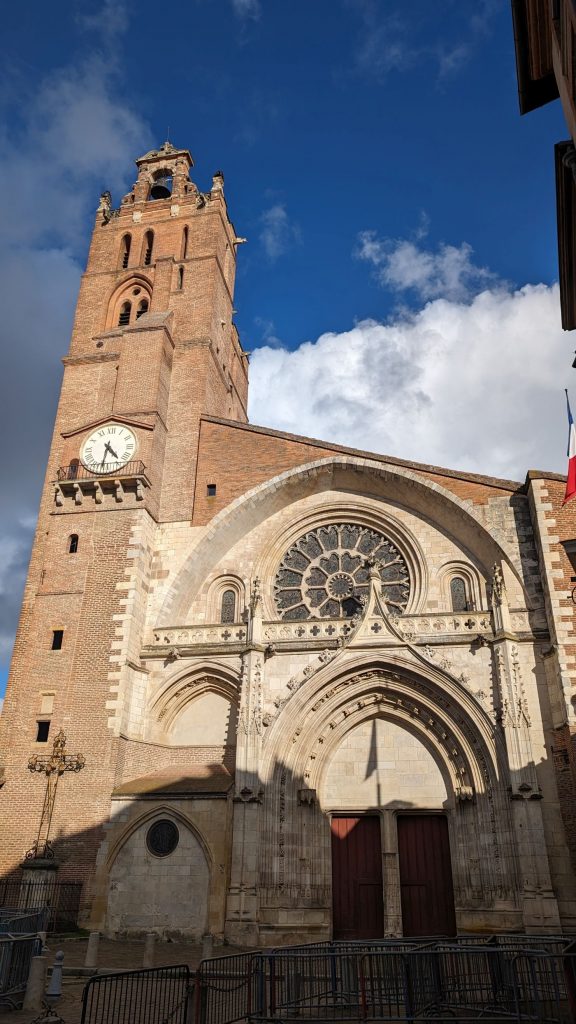
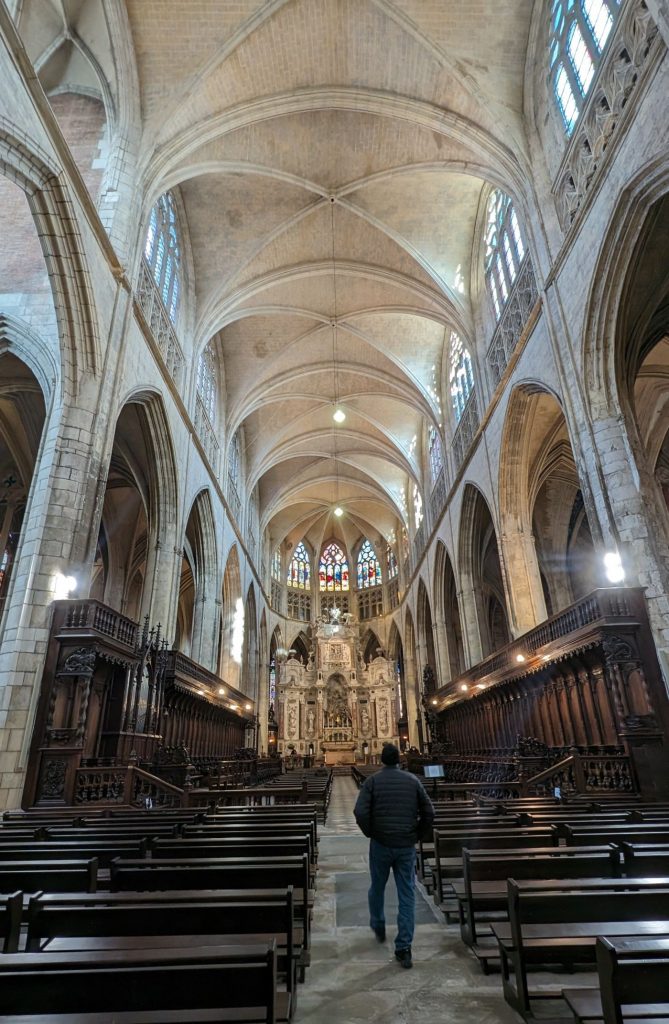
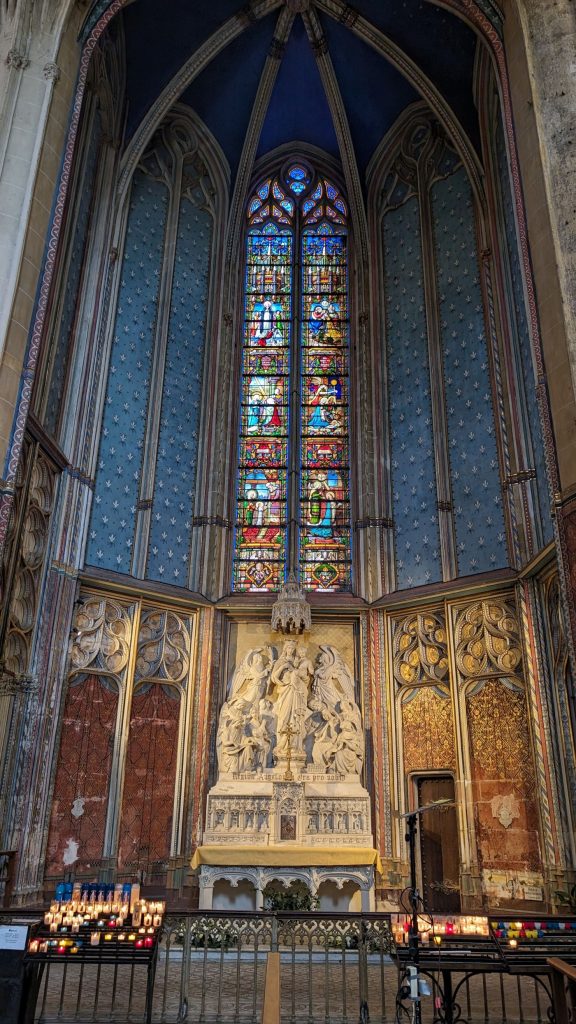
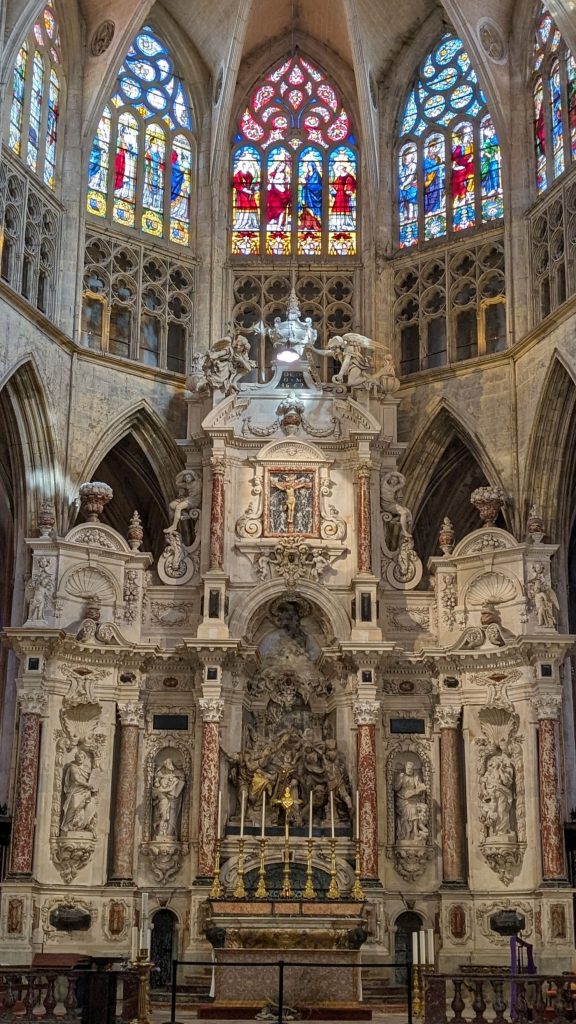
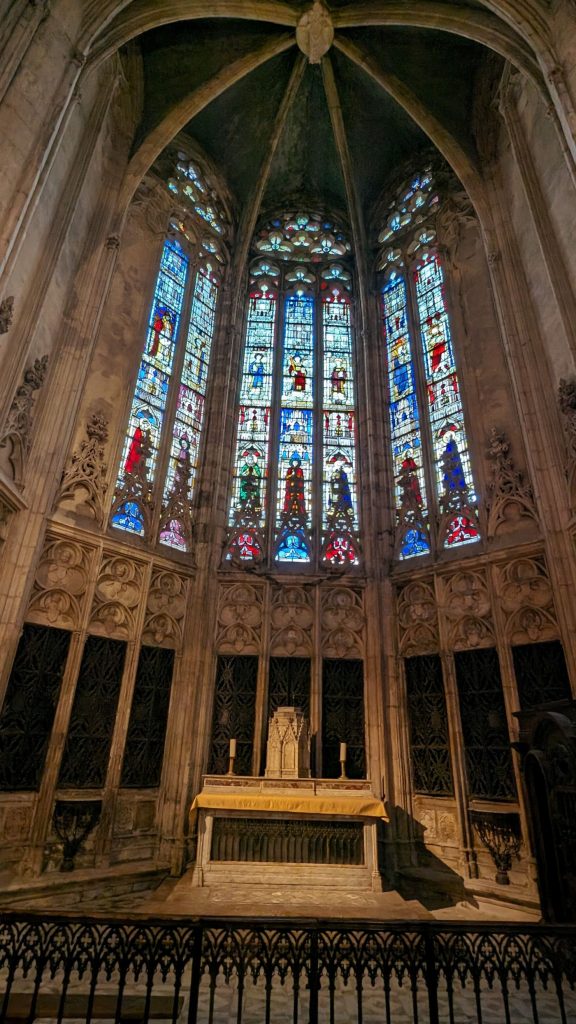
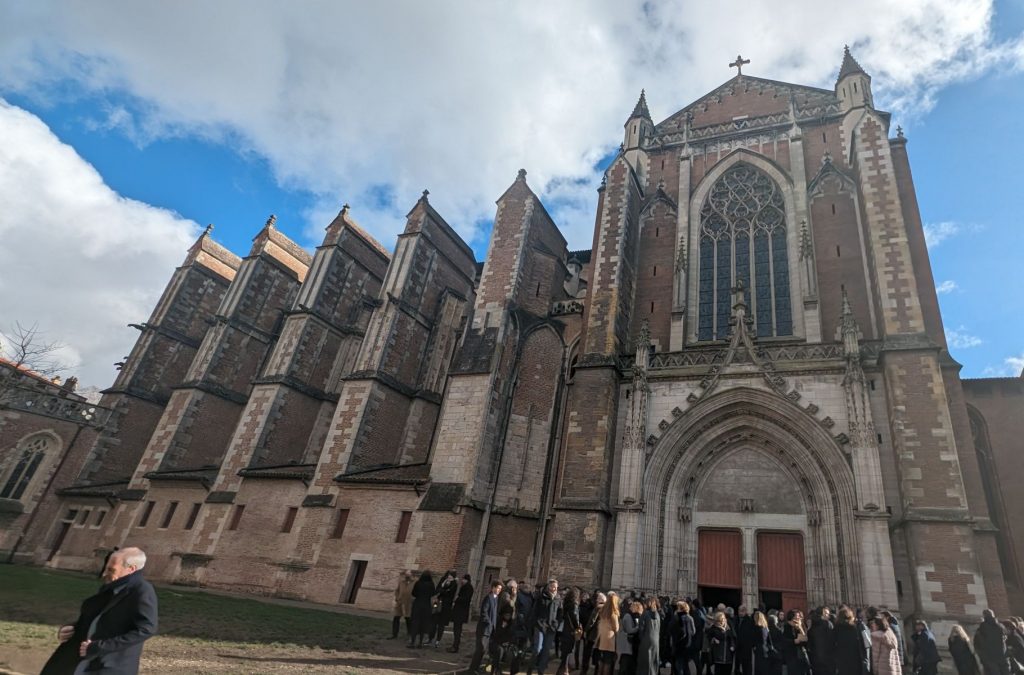
Our next stop was the Basilica of Saint-Sernin. This place is massive! It is one of the largest Romanesque churches in the world and the largest basilica in Europe. The church was built between 1080 A.D. and 1120 A.D. on the basis of a basilica-style church built in the 4th century. It is named after the dead Christian martyr Saint Sernin. The architecture of the Saint-Sernin Cathedral is very classic. The two crypts and tympanum above the main entrance of the church and the 800 stigma sculptures depict the scene of the ascension of Jesus. The more distinctive feature is its five-story 64-meter-high bell tower.
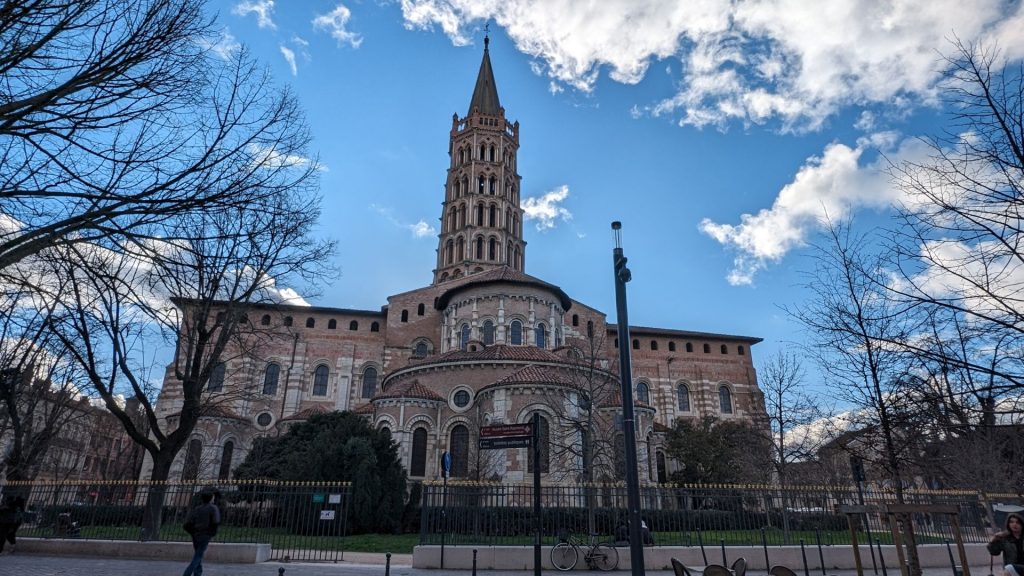
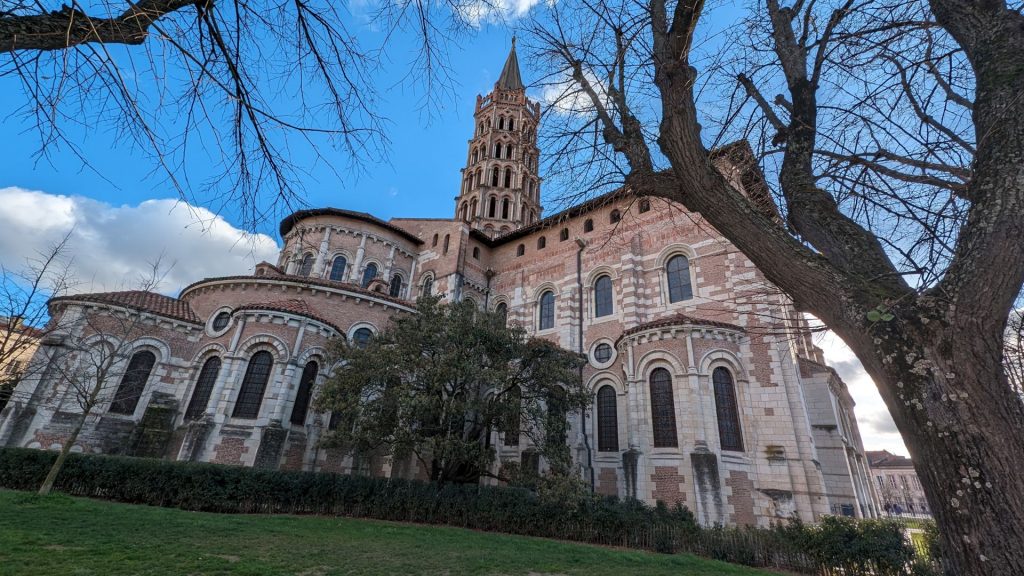
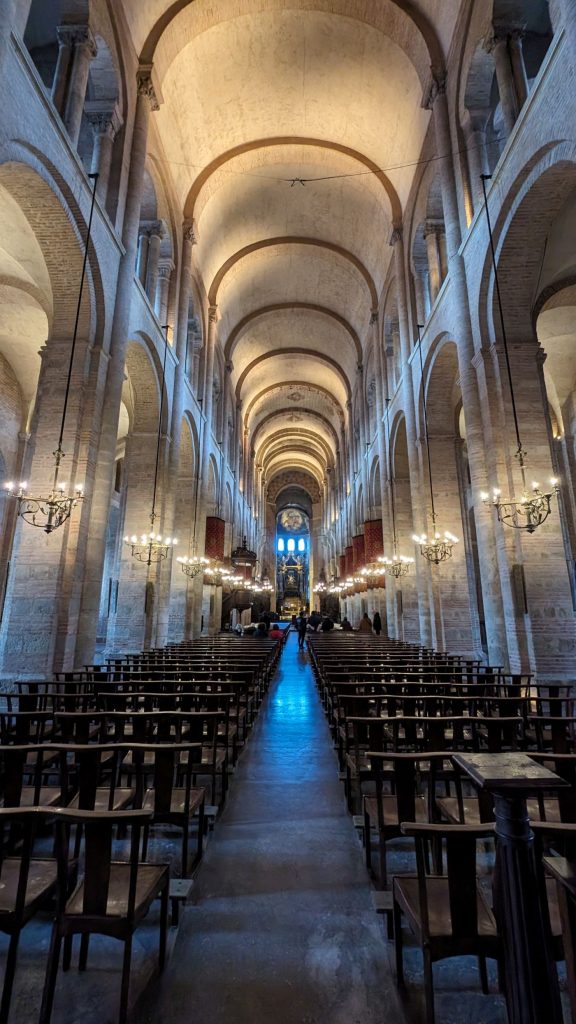
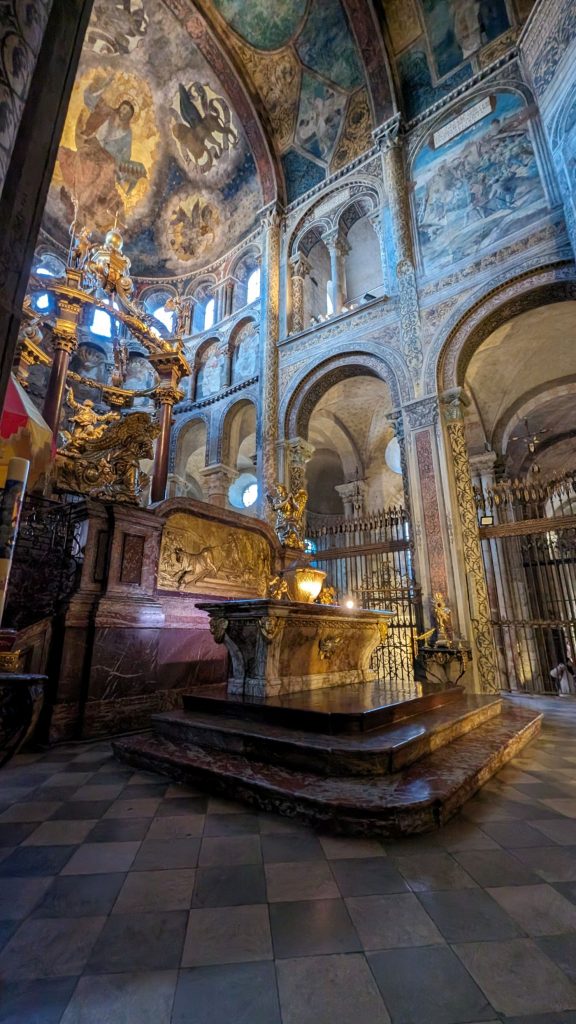
The Church of the Jacobins (Couvent des Jacobins) was next on our list. Toulouse is the cradle of the order of the Preaching Brothers, also called the Dominicans. From the beginning of the 13th century, they fought against heresy, through their preaching and their involvement in the Inquisition. Initially a place of study, prayer and teaching, the Jacobins convent has survived the centuries despite its multiple uses (including an army barracks, infirmary for sick horses, museum, playground, workshop, place for political meetings, and more!) over time. It preserves the memory of the Dominicans and still reflects their way of life today.
Saint Thomas Aquinas
Born in southern Italy, Thomas entered the order of Preachers in 1244. He studied and taught the philosophy of Aristotle, read St. Augustine, the church fathers and the Bible. Philosopher and theologian, he advocated religious rationalism: neither faith nor reason can dominate, for the simple reason that one cannot exist without the other.
He traveled all over Europe to teach but never came to Toulouse. He was canonized in 1323 and in 1368, Pope Urban V gave his relics to the Dominicans so that they could be venerated in Toulouse. They are located under the altar in the Couvent.
As for the building, from its seven-story octagonal bell tower to the palm tree-shaped vaulted ceiling, the Couvent des Jacobins is one of Toulouse’s oldest and most recognizable buildings. It’s built in the traditional brick style of Southern French Gothic. Construction started in 1230, and almost 800 years later it remains an essential part of life in Toulouse and one of France’s more arresting sights.
Unlike most church naves, this one is quite sparse inside, and the eye is drawn to the enormous palm-shaped columns (Le Palmier des Jacobins) in the center that fan out across the ceiling in staggered black and red blocks, reaching spider-like onto the steep walls. Those walls are spectacular too, housing enormous pencil-shaped stained glass windows that allow natural light to come pouring in.
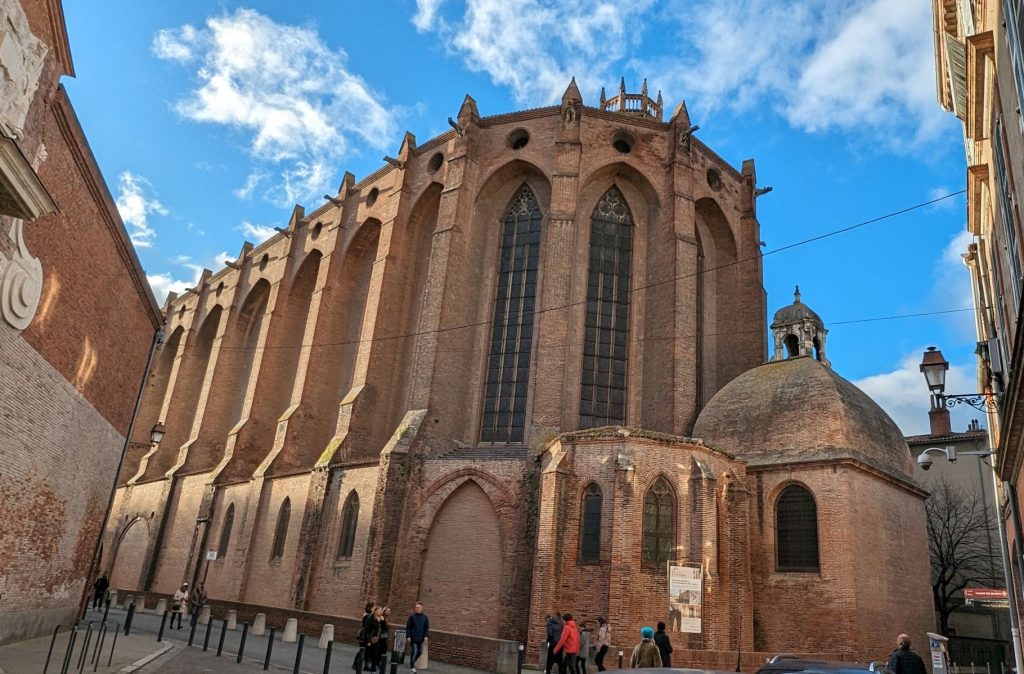
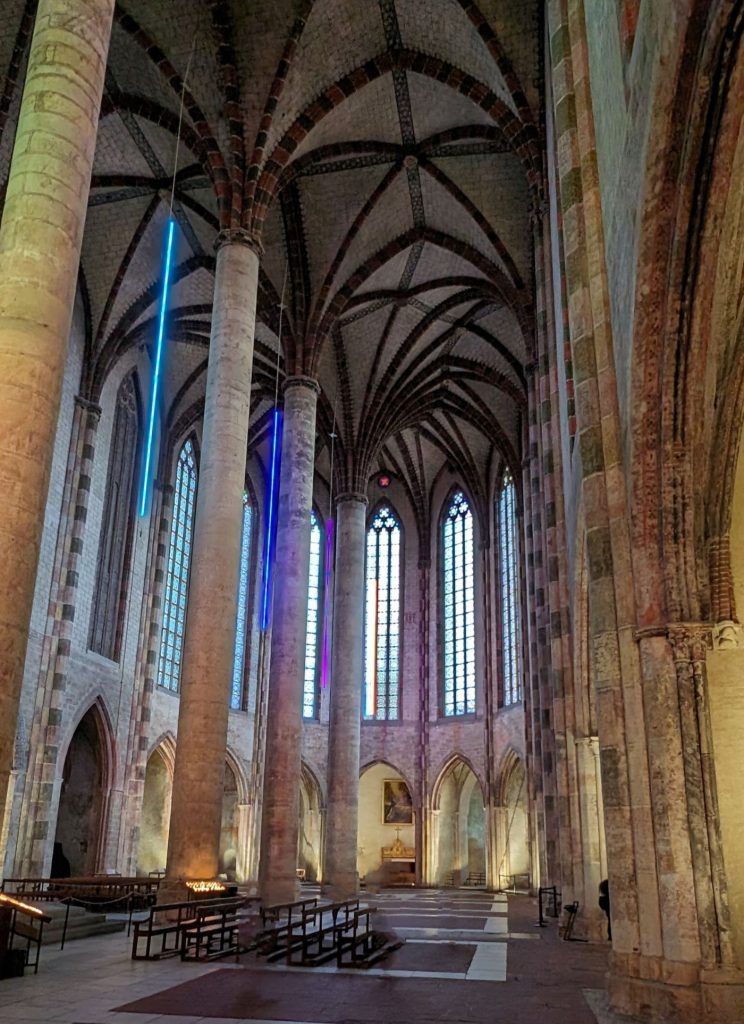
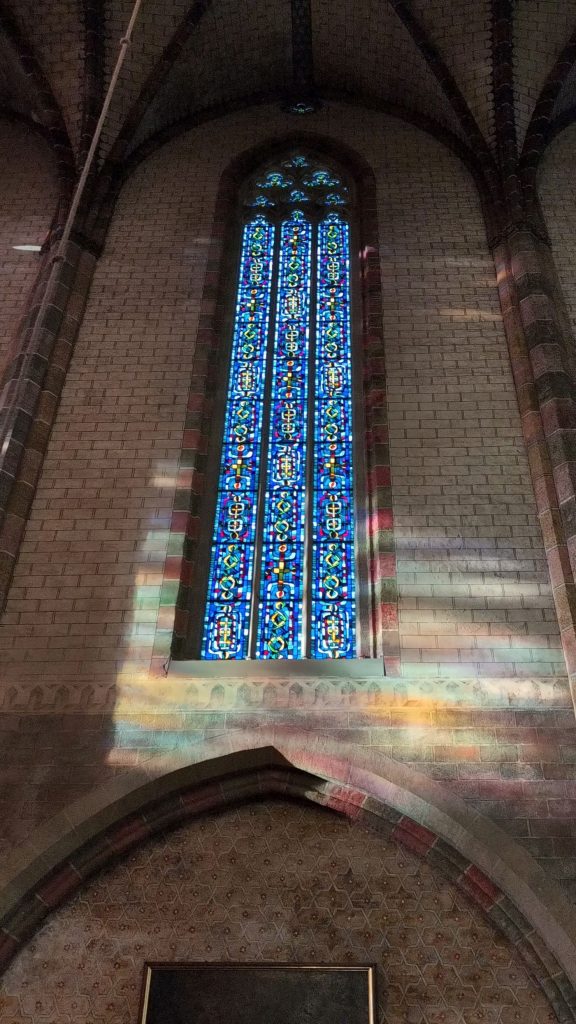
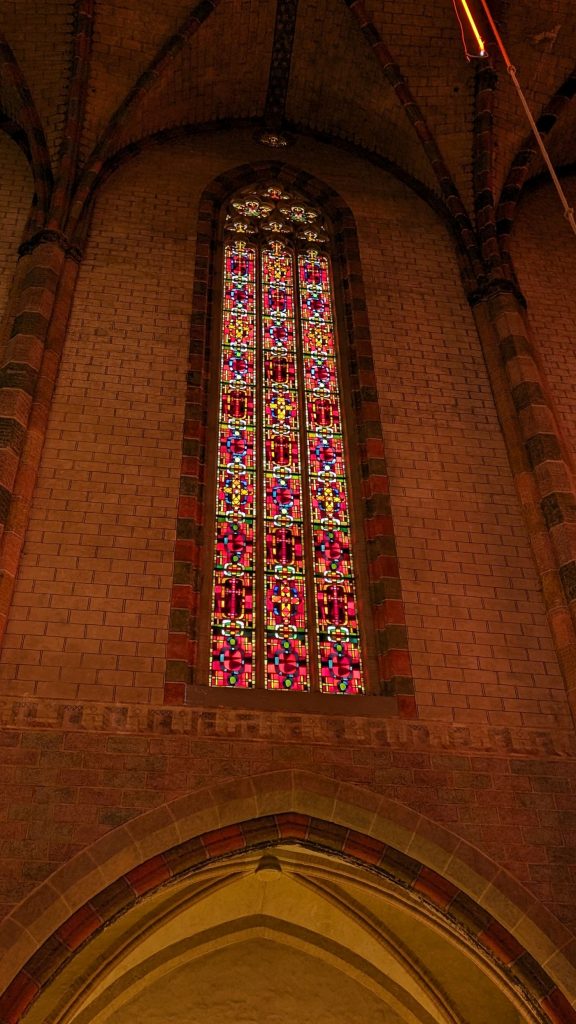
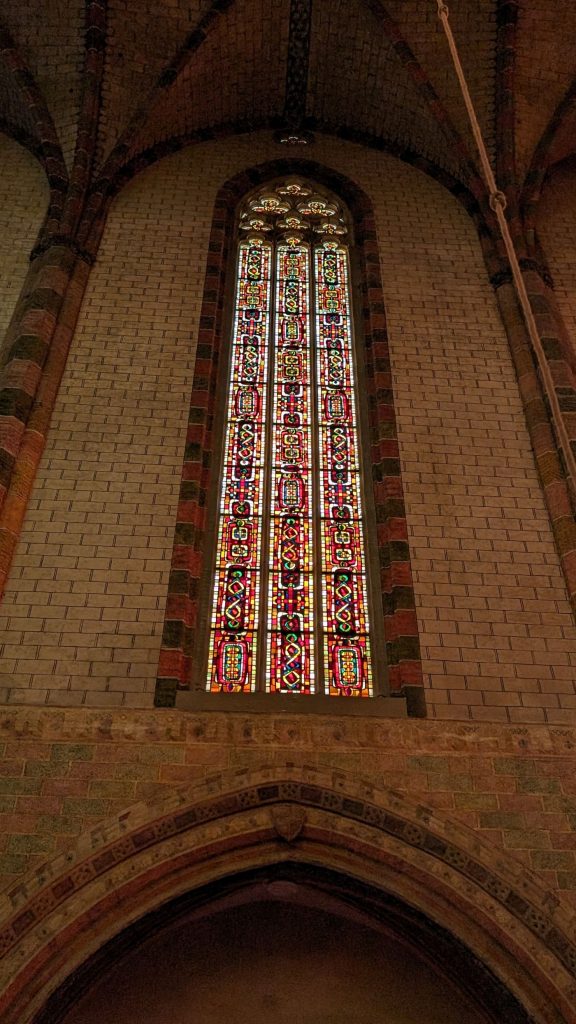
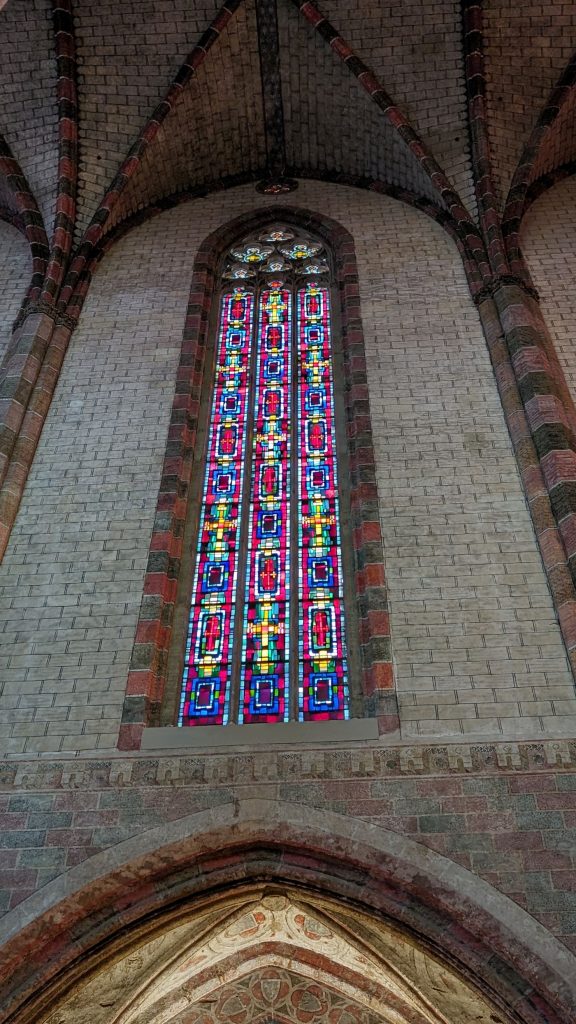
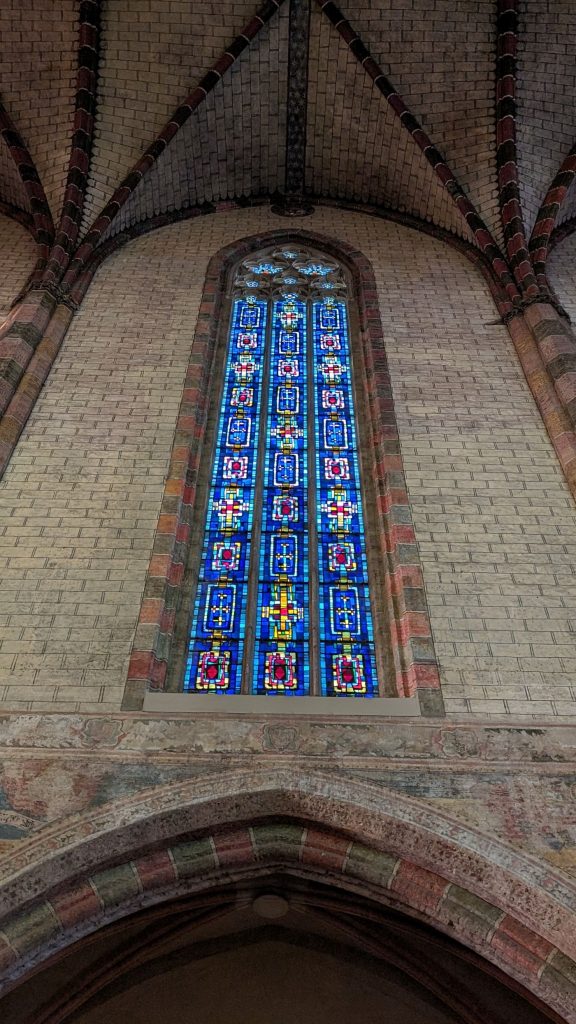
We ended our day at a pub. Here’s a picture of the interior next to a picture of the Pont Neuf. The Pont Neuf (new bridge) was completed in 1632 and is the oldest bridge in the city.
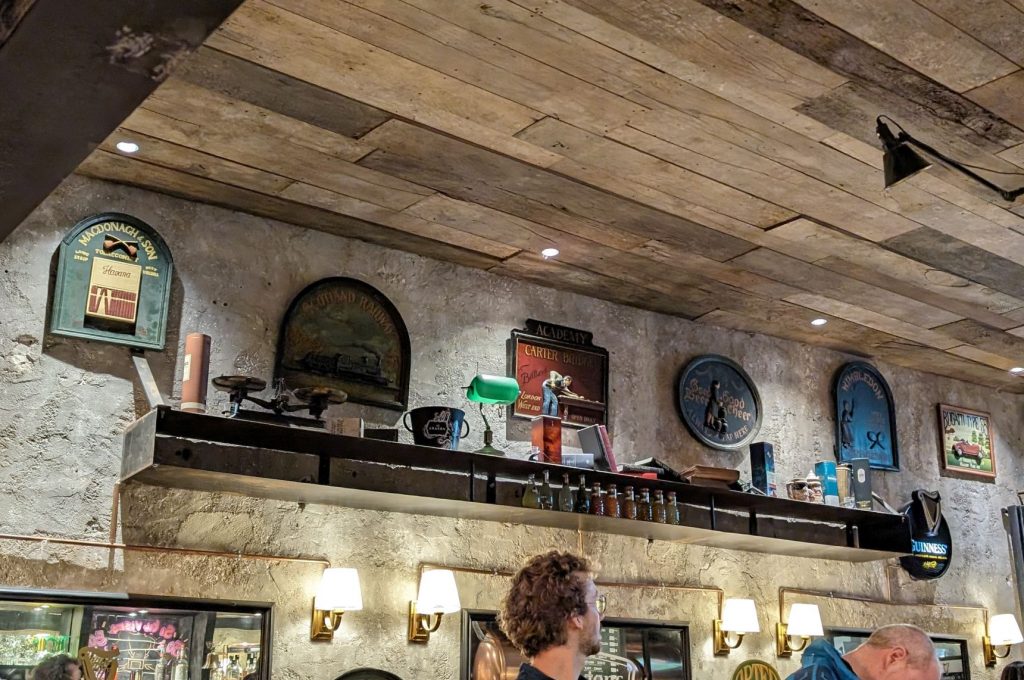
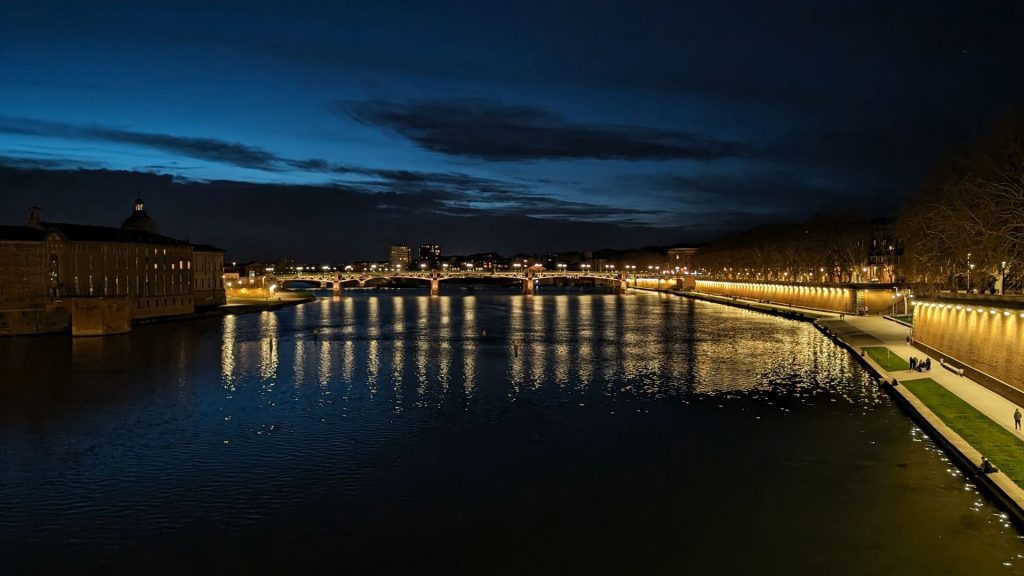
We took the train to Montpellier the next day and spent the afternoon and evening and part of the next morning there.
Before we go there, here is a fun travel fact. If you are assigned to a particular train compartment, use the handy dandy map to figure out where to stand when the train arrives so you don’t have to sprint to the correct compartment (perhaps with heavy luggage) before the train leaves you in the dust. Here’s a picture of such a map. In our case, we were seated in compartment 8, so we stood beneath the “W” sign posted at the station.
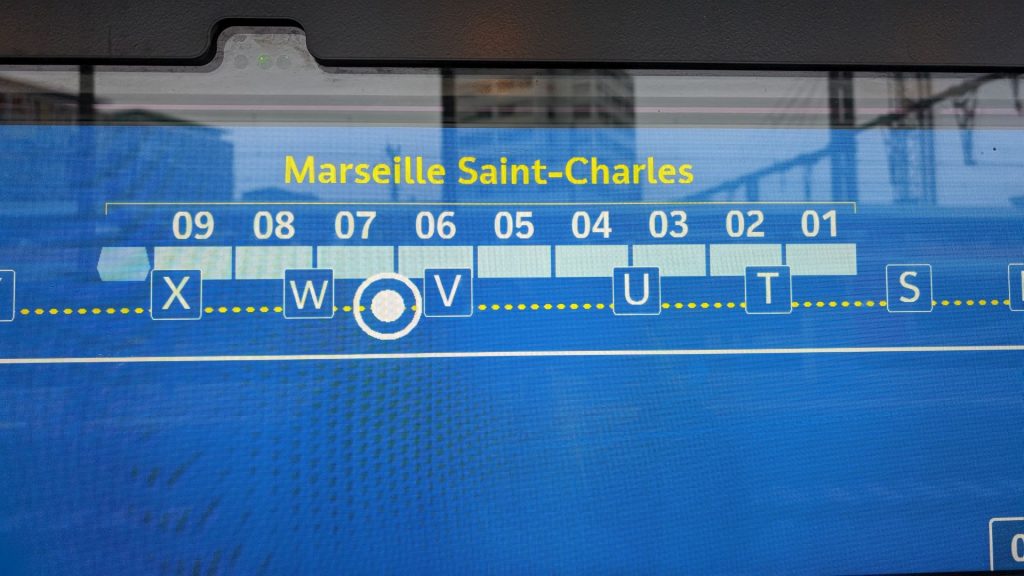
We spent all of our time in Montpellier walking about outside. There was a lot to see and we were quite entertained! Here are some pictures.
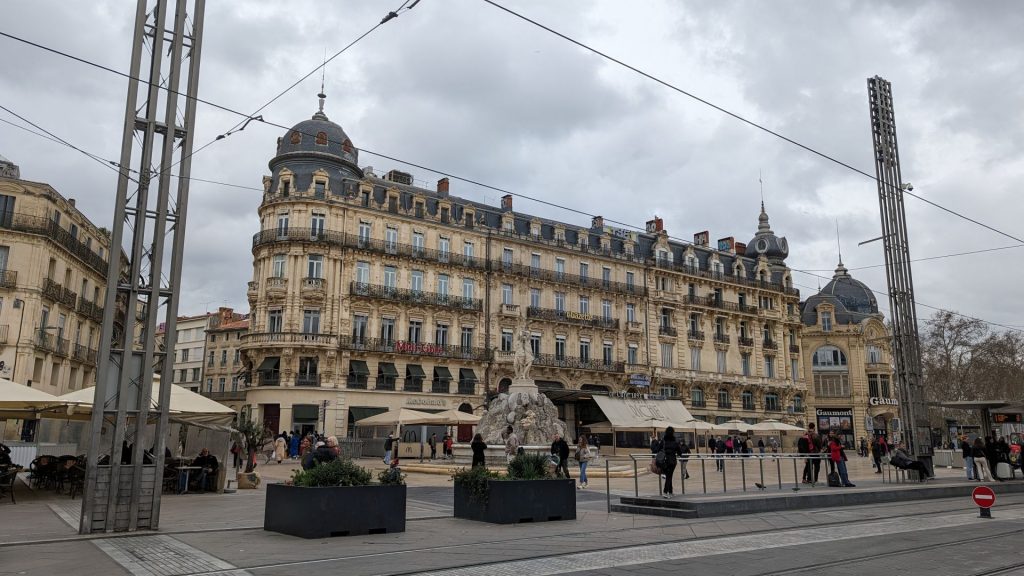
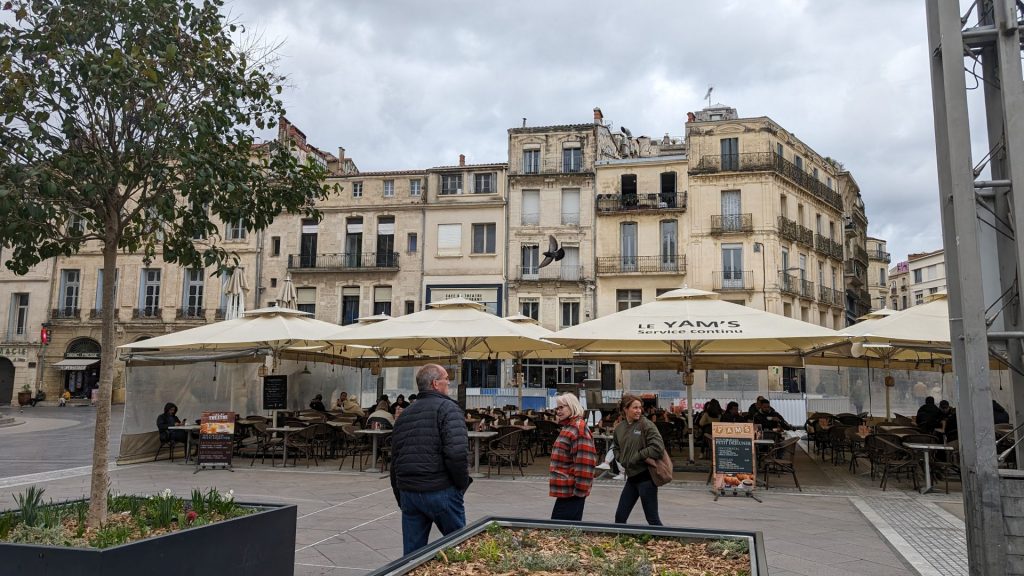
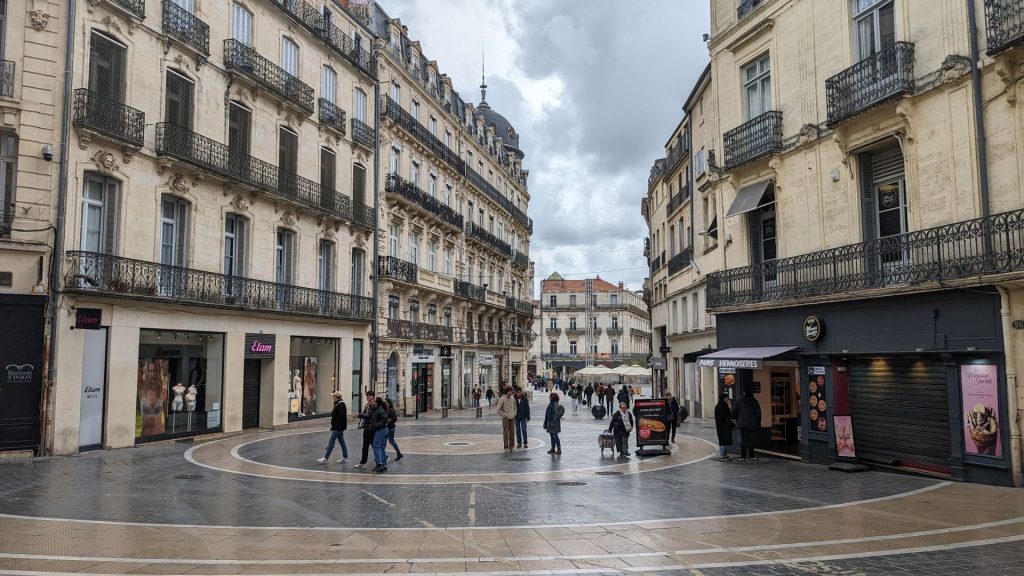
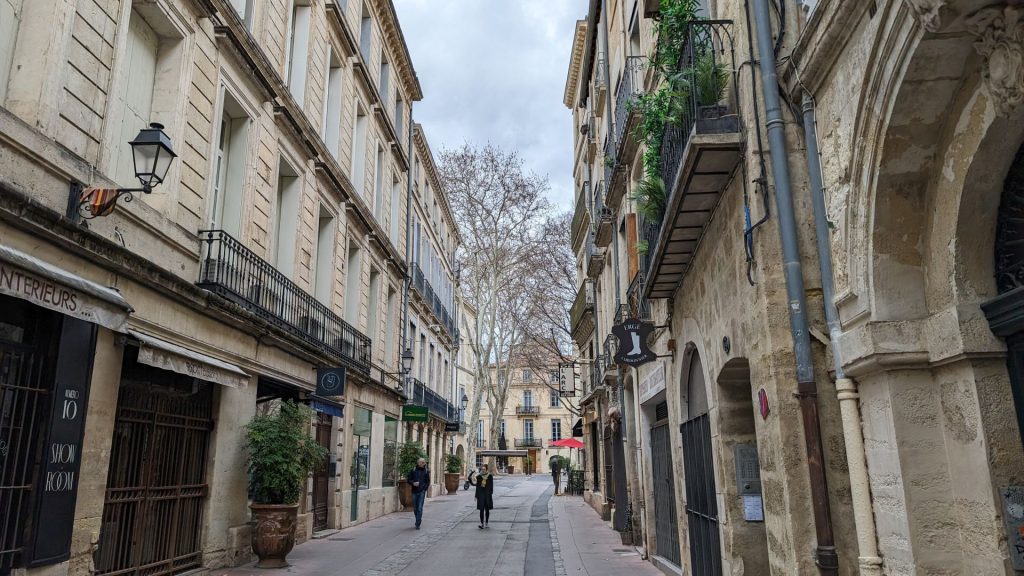
At the center of one square is a monumental fountain, covered with centuries of grown moss, named La Fontaine des Trois Graces. It was created by the sculptor Étienne d’ Antoine in 1790. The fountainhead was hand carved in French limestone and playful cherubs are peeking through the thick layers of century old moss. The center piece is surmounted by the magnificently carved Three Graces.
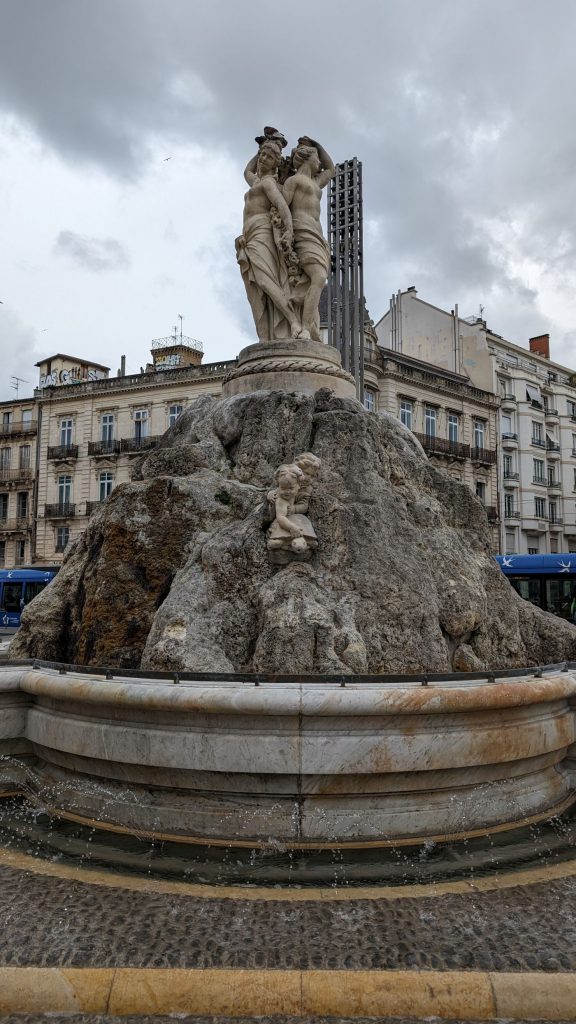
Statue of Louis XIV
Louis XIV, known as the Sun King reigned from 1643 to his death in 1715. His reign began at the age of four and lasted seventy-two years. As such, it is one of the longest documented reigns of any European monarch. Because of wars, the death of Louis XIV in 1715 and for many other reasons, it took 26 years before the statue in Montpellier by Pierre Mazeline de Rouen and Simon Hurtrelle de Béthune (1692) could be unveiled in 1718 after transportation from Paris that took six months. The statue did not survive the revolution in 1792, and was replaced by the guillotine. In 1838, a new statue (pictured below), half the size of the original one and this time designed by Jean-Baptiste Joseph de Bay and founded by Francois Joseph Carbonneaux, replaced the original. This time the transport from Paris to Montpellier took 25 days.
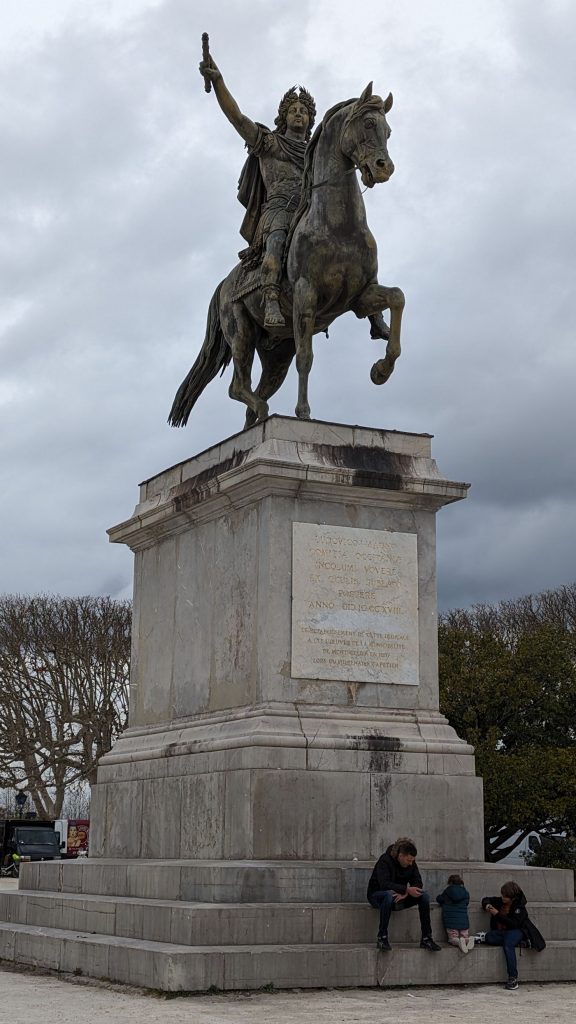
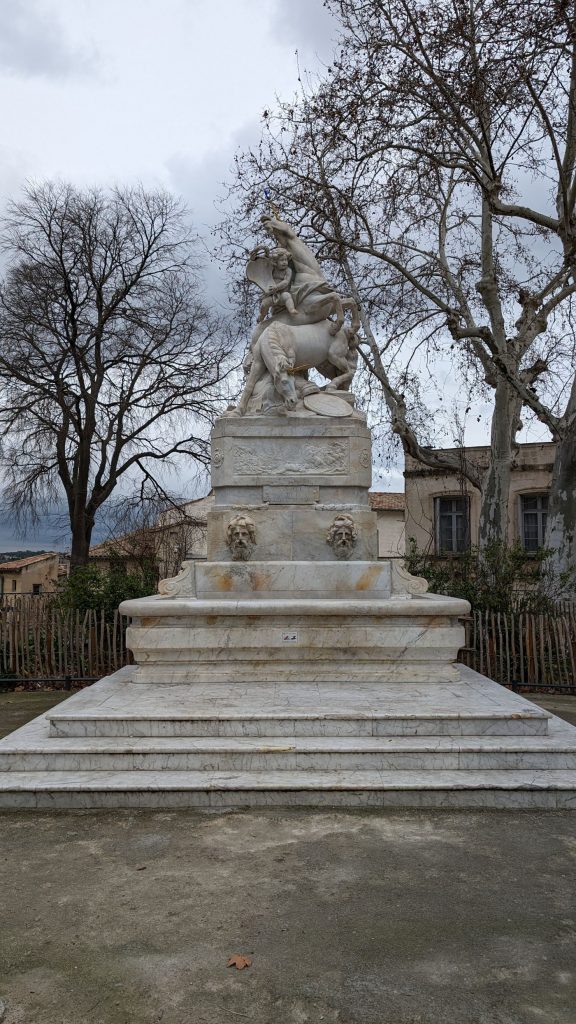
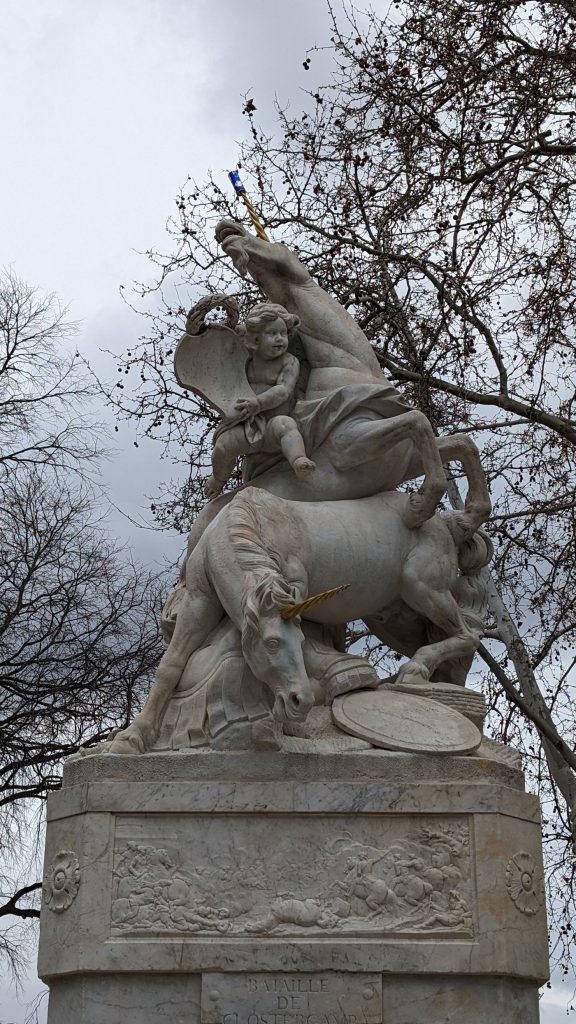
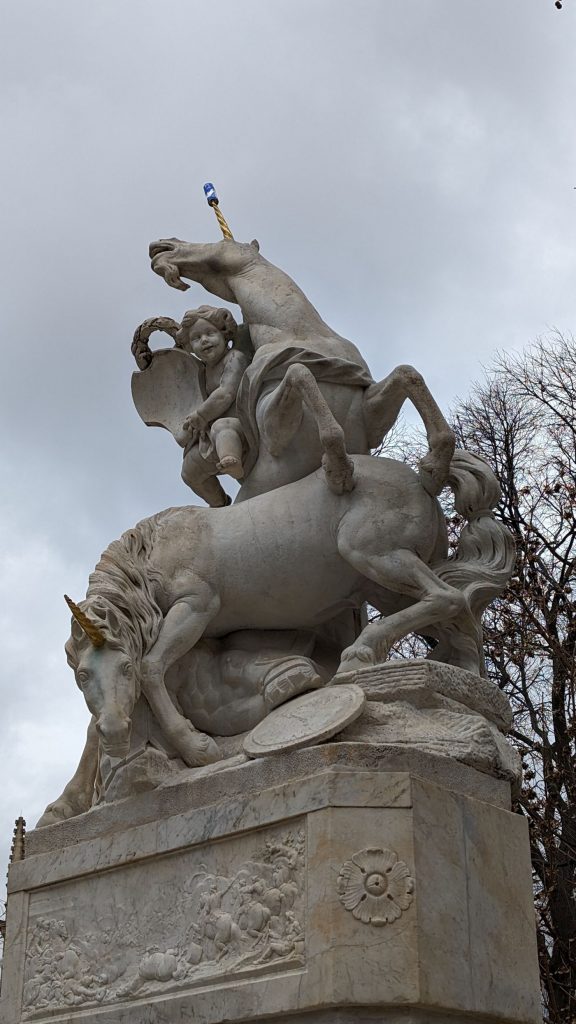
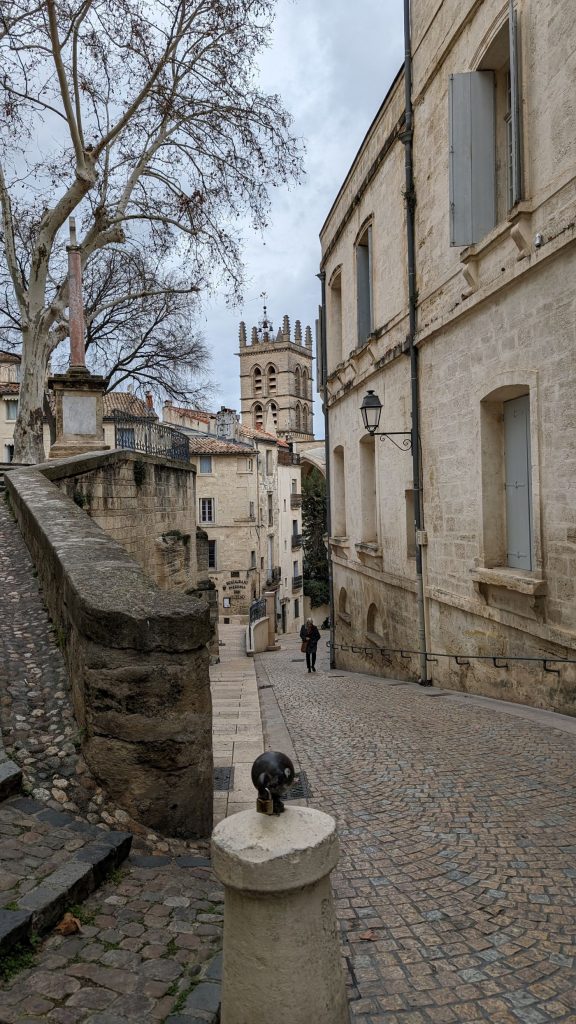
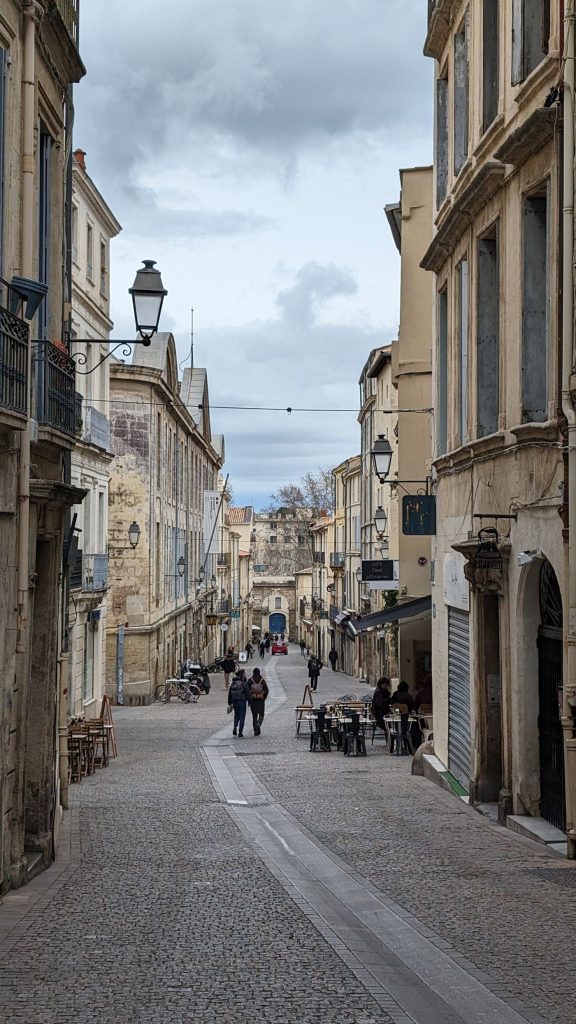
We walked to the Montpellier Cathedral. It was a Sunday and they were between services when we arrived. The priest told us we could step inside. A guy inside told us to leave. So I snapped one quick picture and we left. 🙂
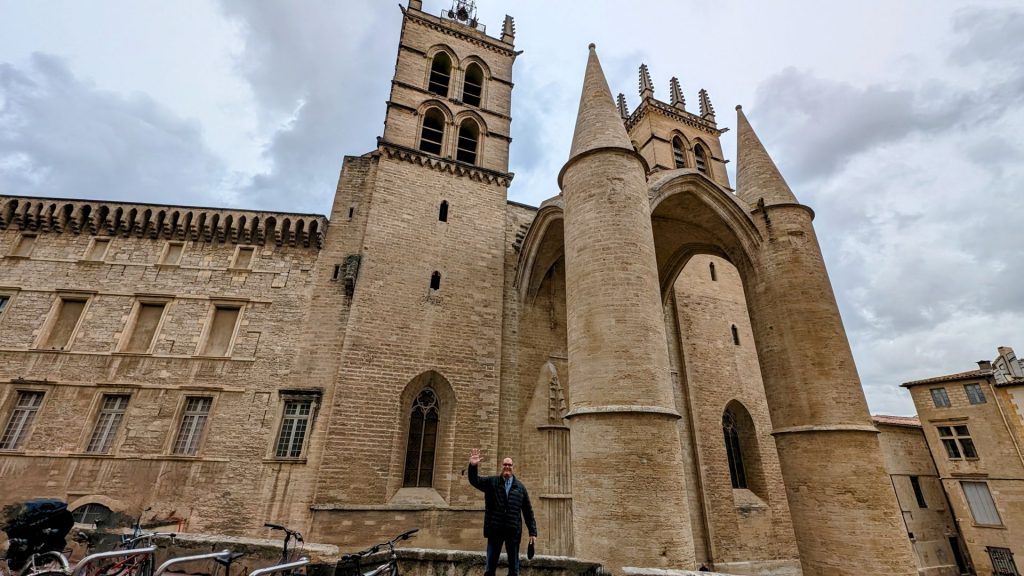
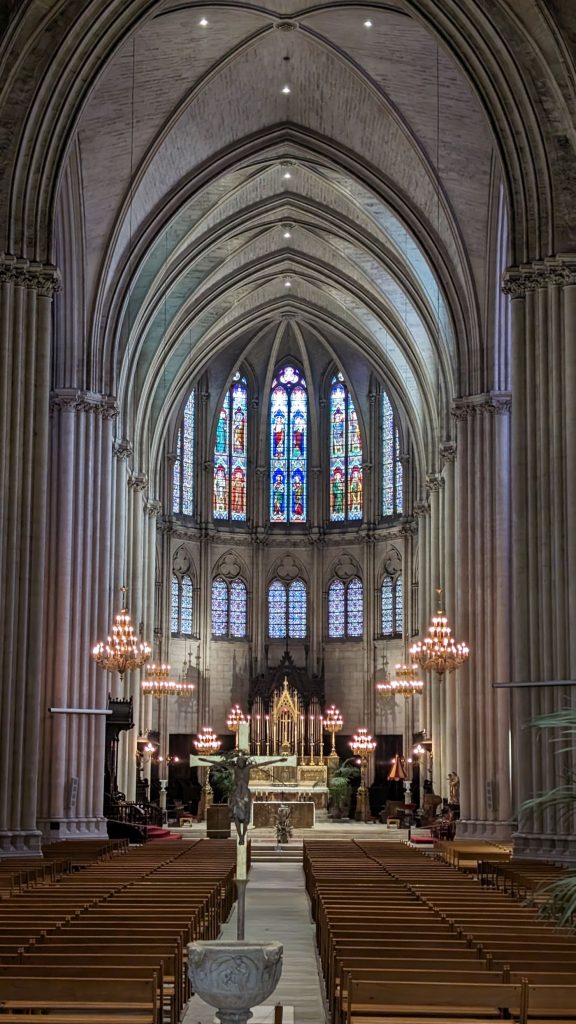
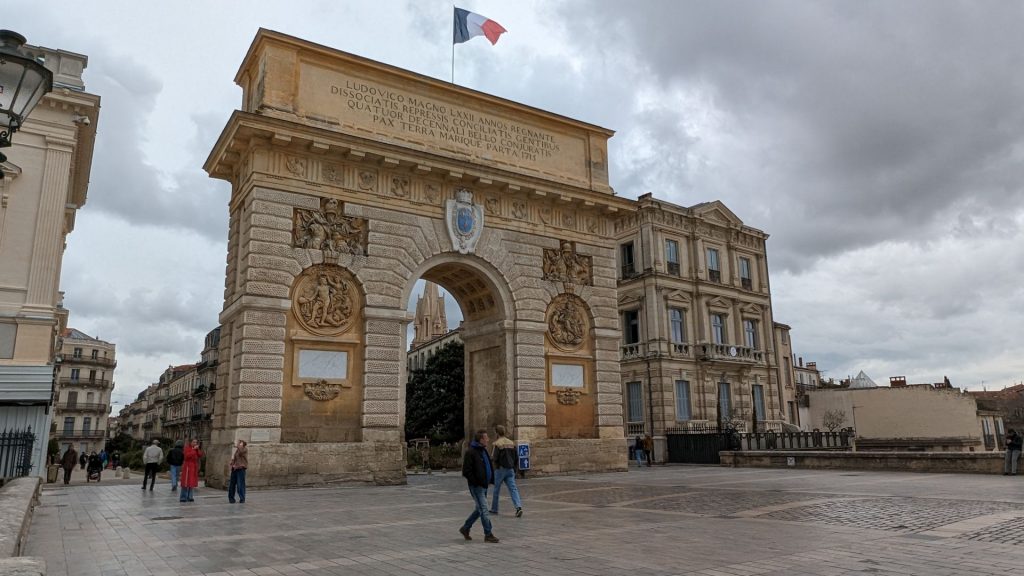
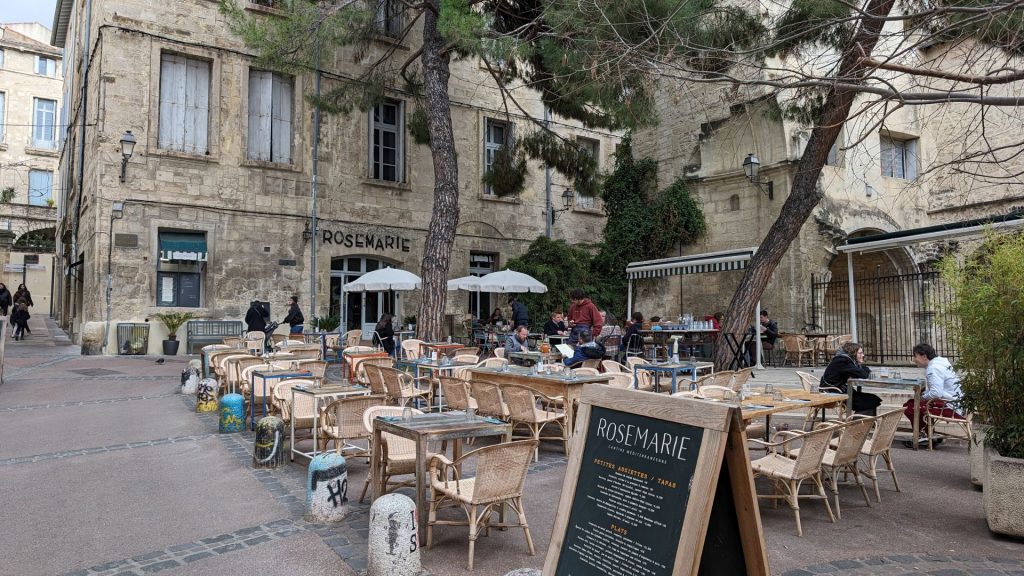
And now, an aqueduct! Right next to the Promenade du Peyrou one can enjoy the spectacular architecture of the Saint Clement Aqueduct, also known as the Arceaux Aqueduct. Constructed during the 18th-century, once upon a time this impressive structure used to transport water from the Spring of Clement over 14 kilometers to feed the fountains on La Promenade du Peyrou.
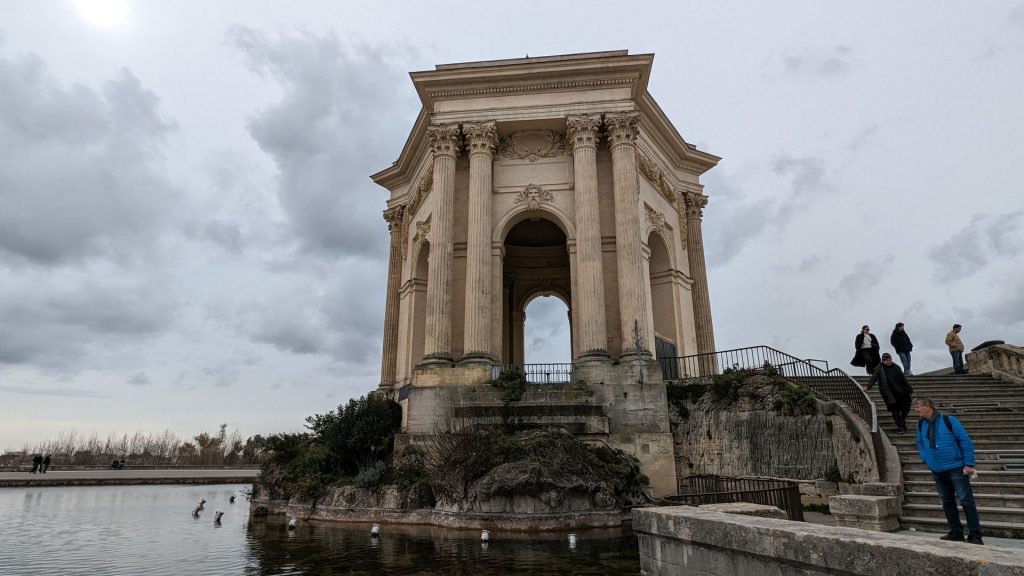
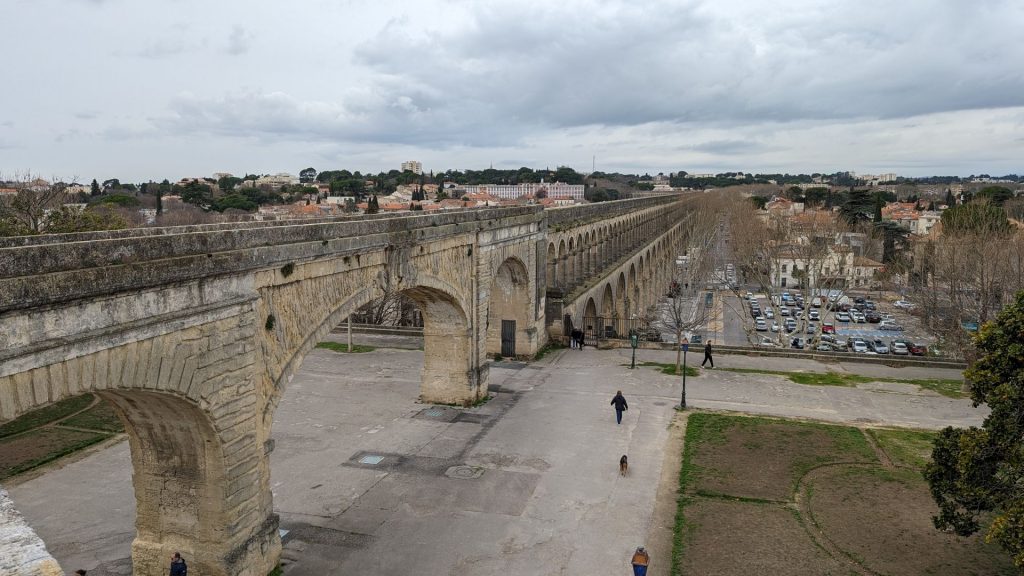
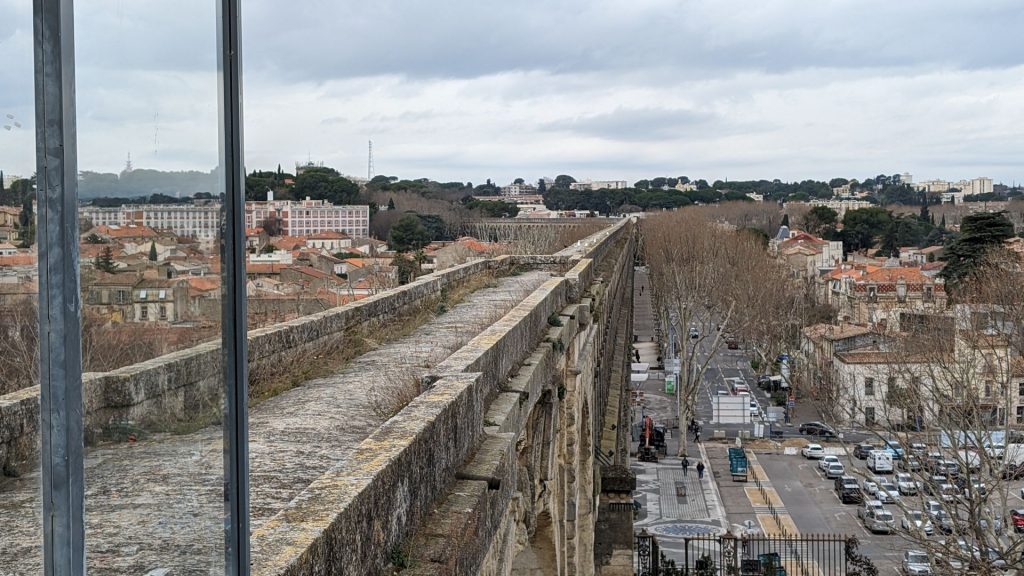
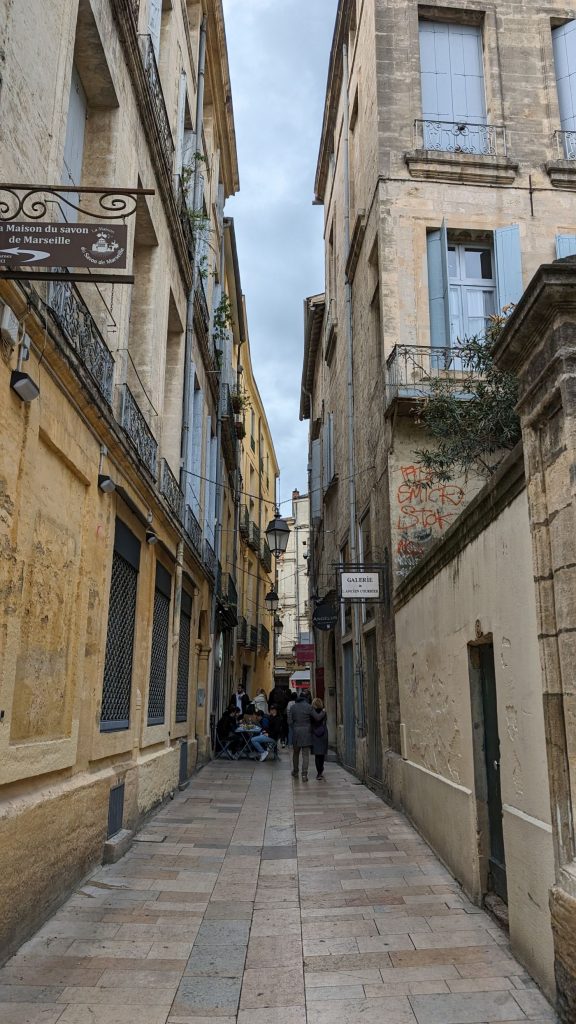
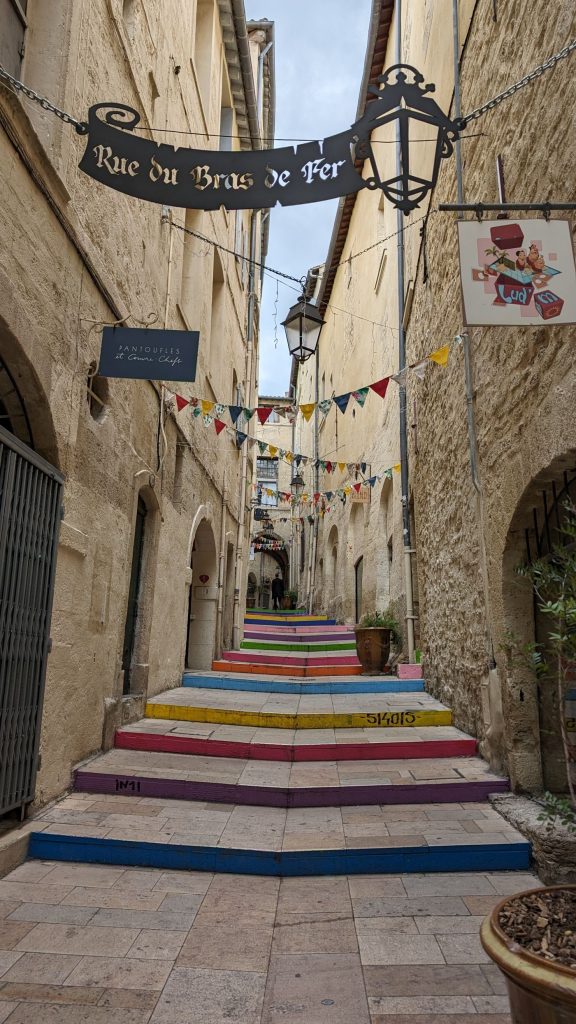
I don’t think I’ve ever gotten a kick out of trams before, but these had fun decorations!
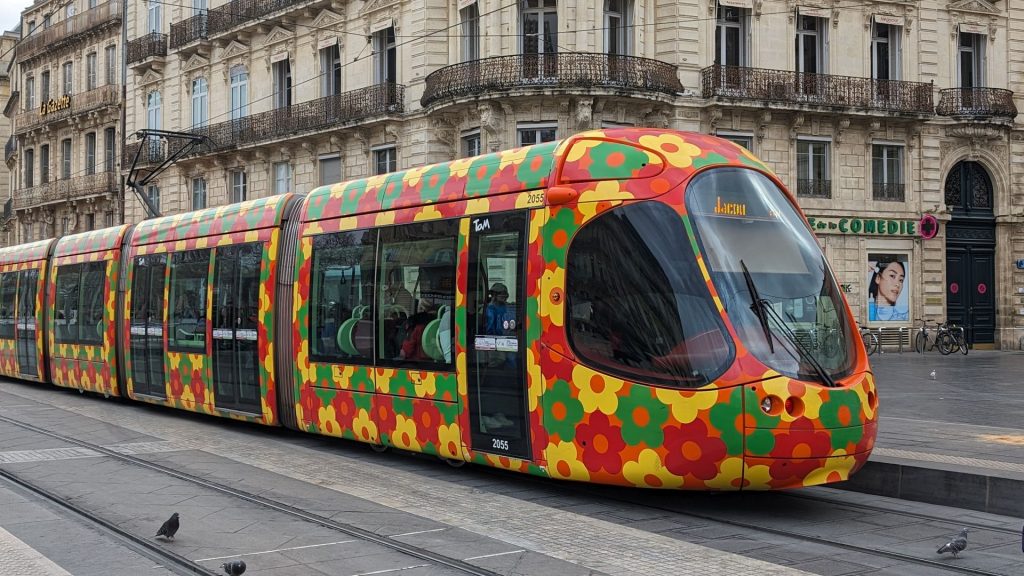
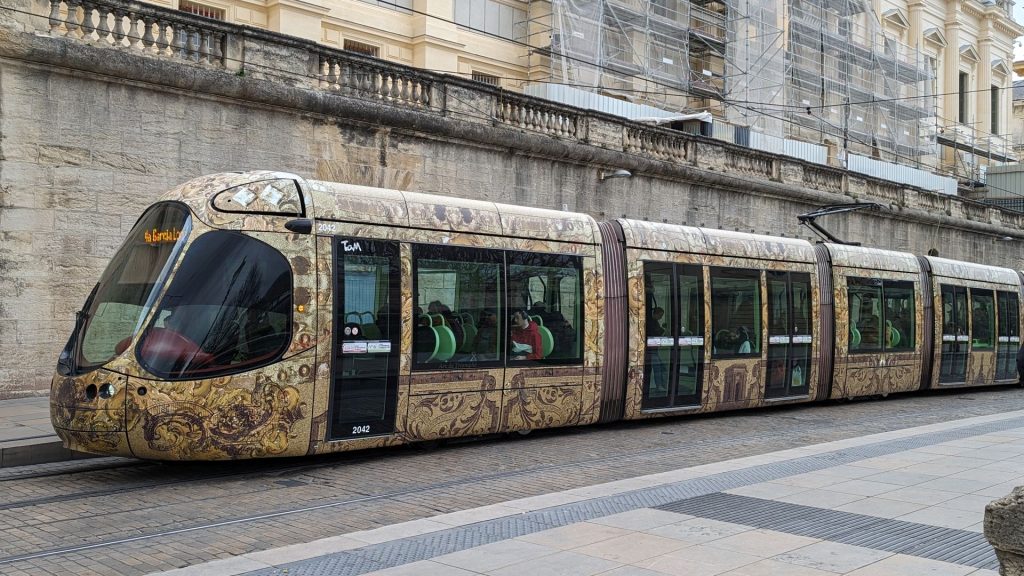
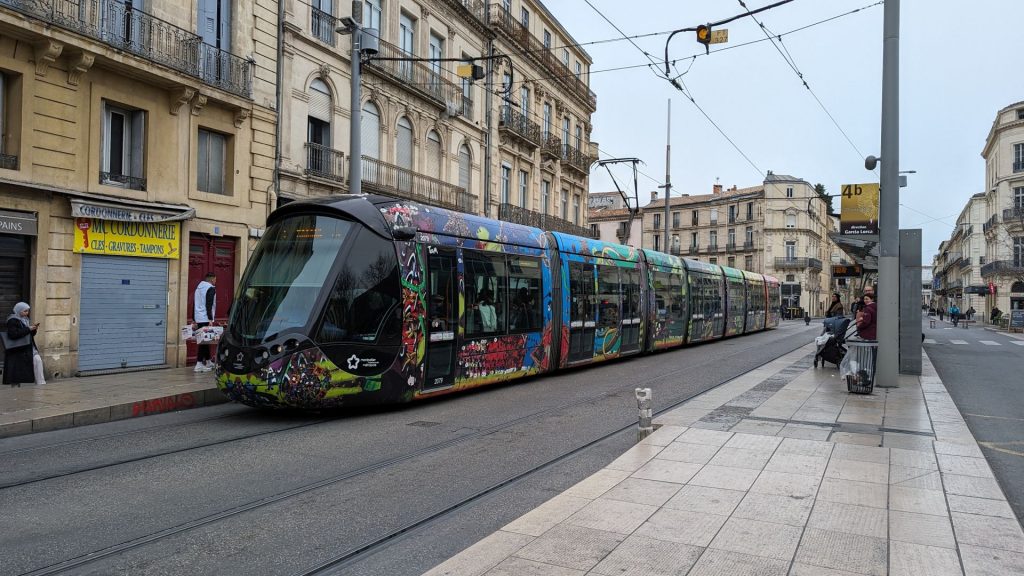
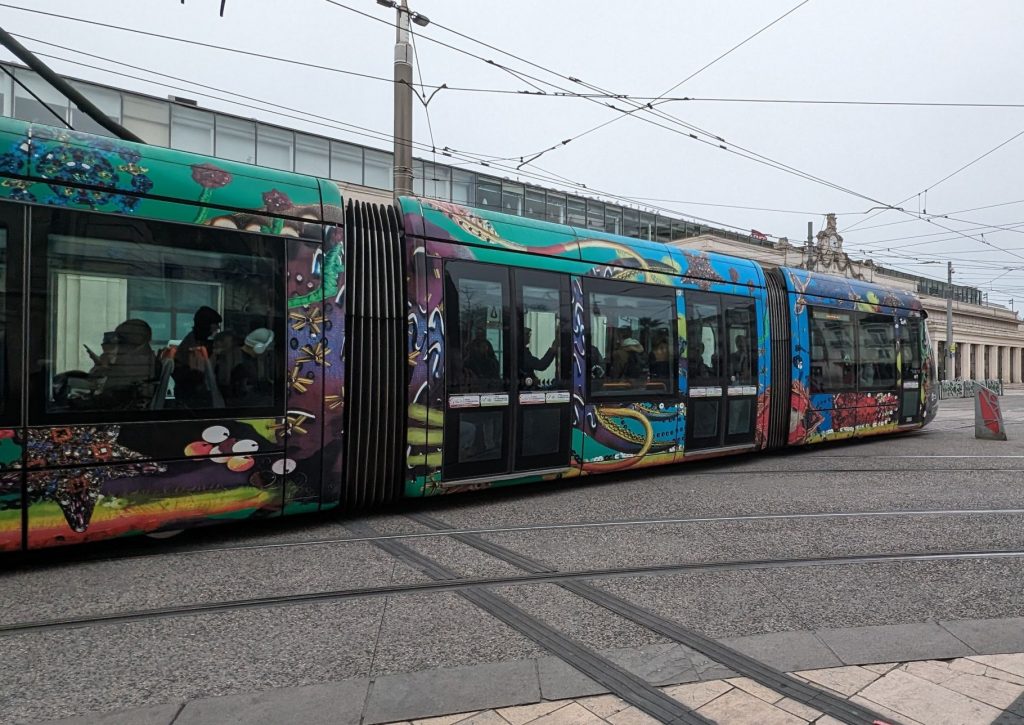
This street art was amazing! These are two completely flat buildings, painted to look 3D.
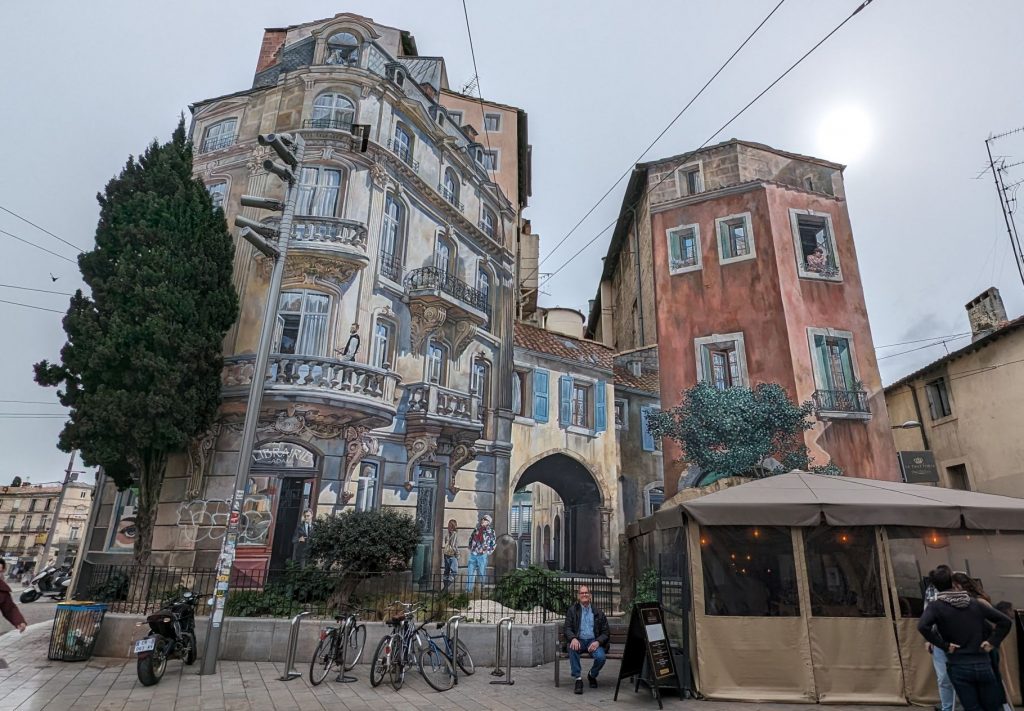
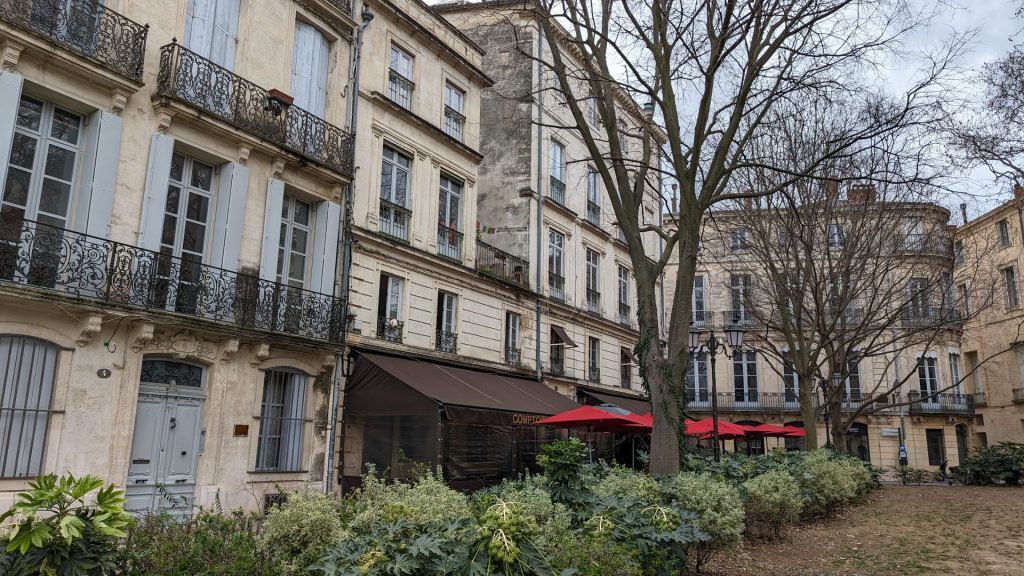
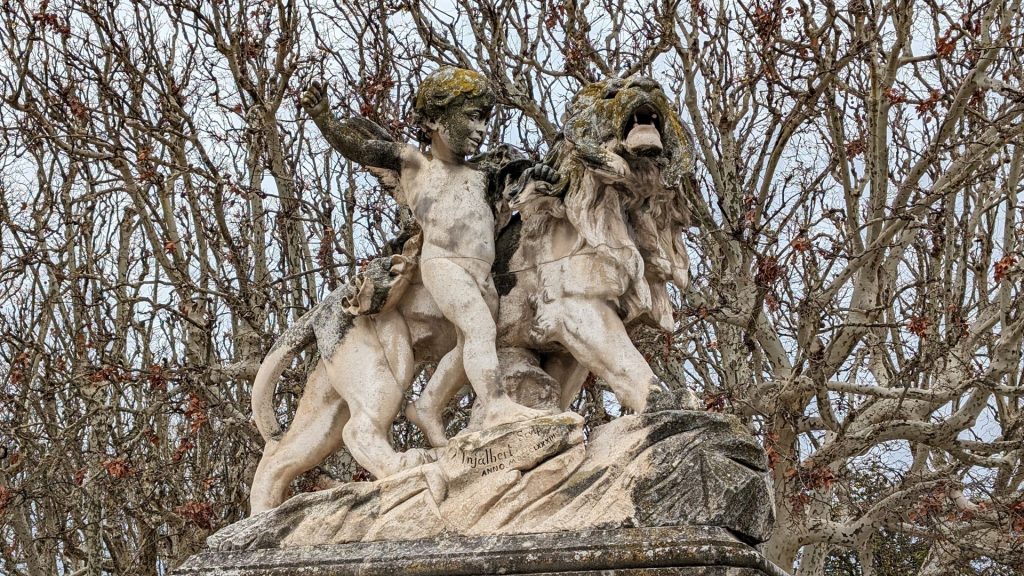
We ended our day at a fun little pub.
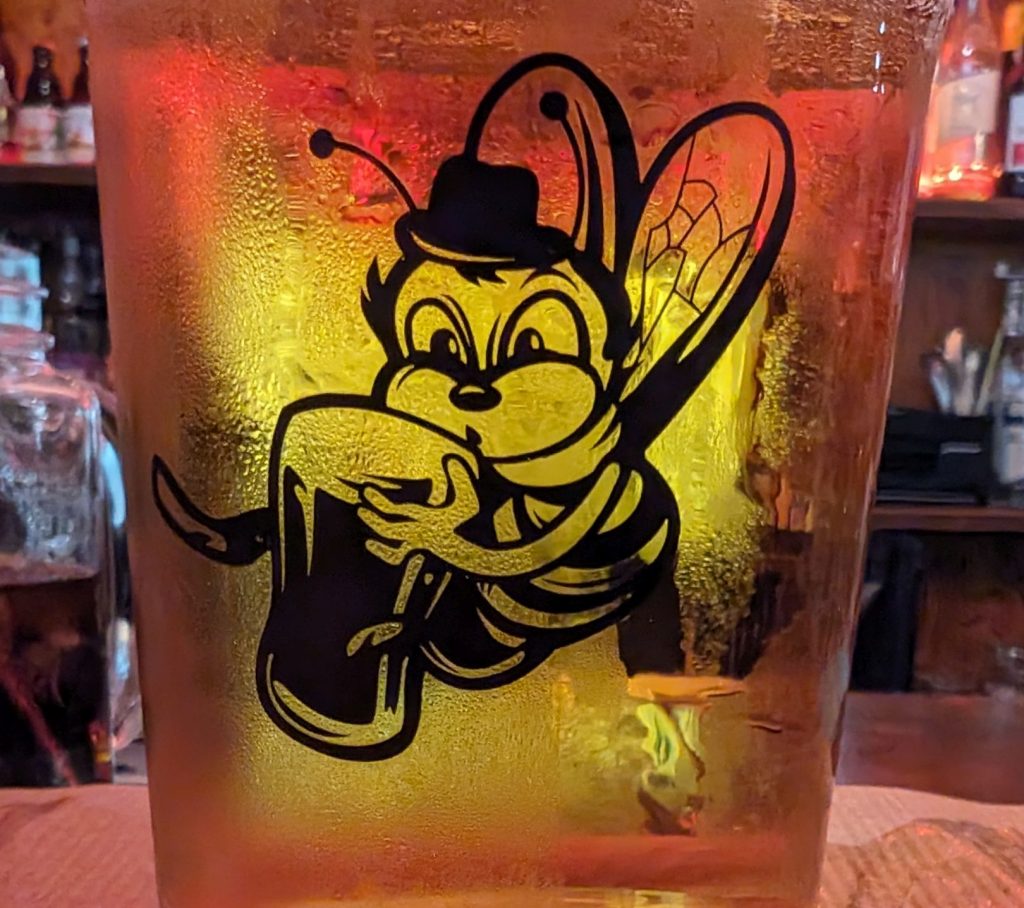
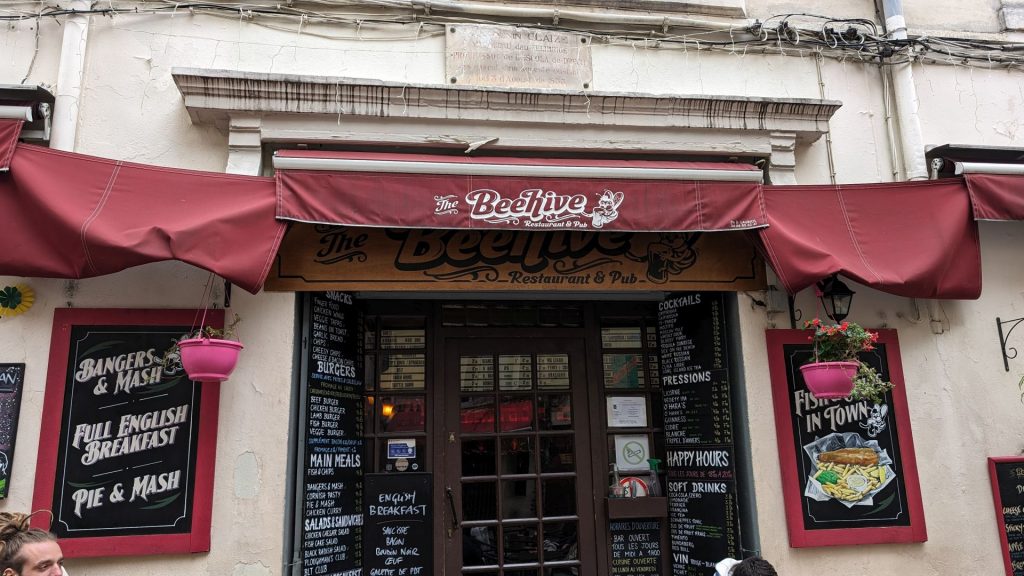
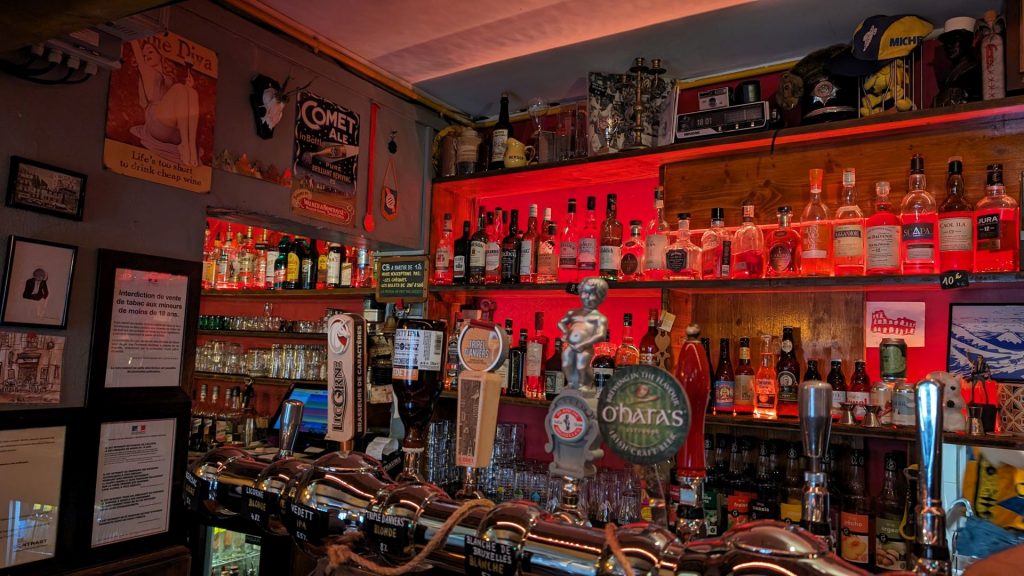
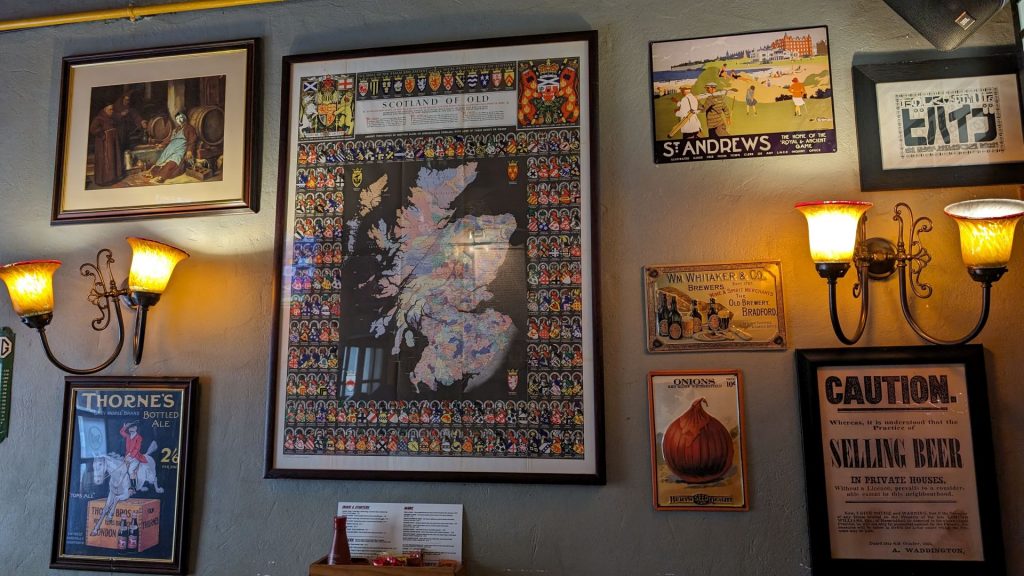
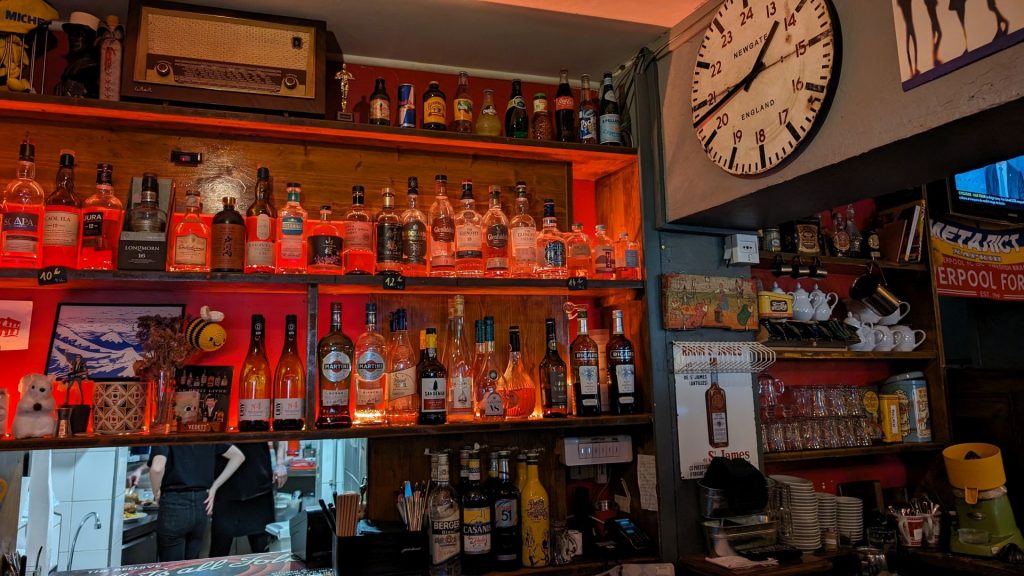
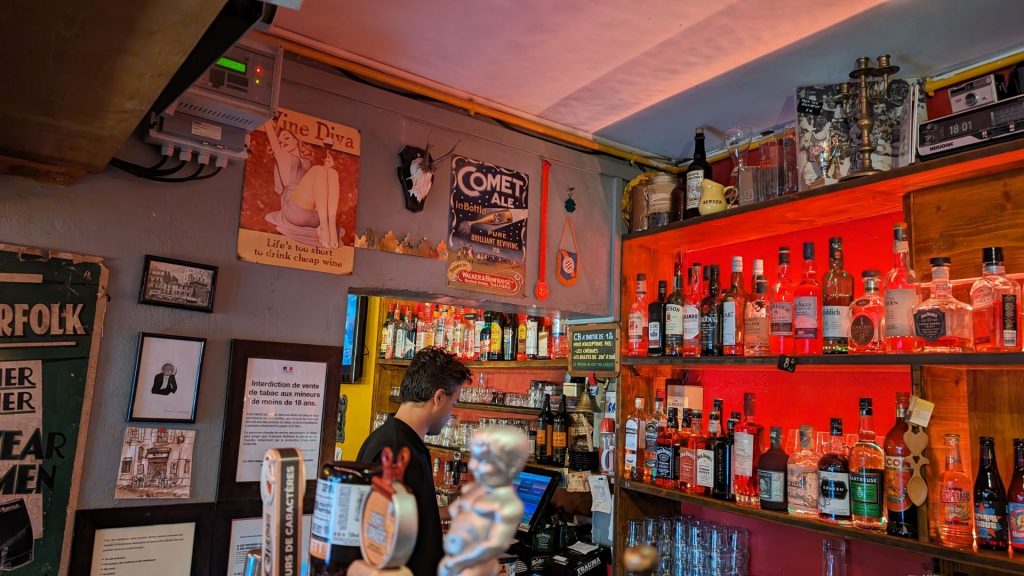
We will continue our visit to southern France in the next post.
